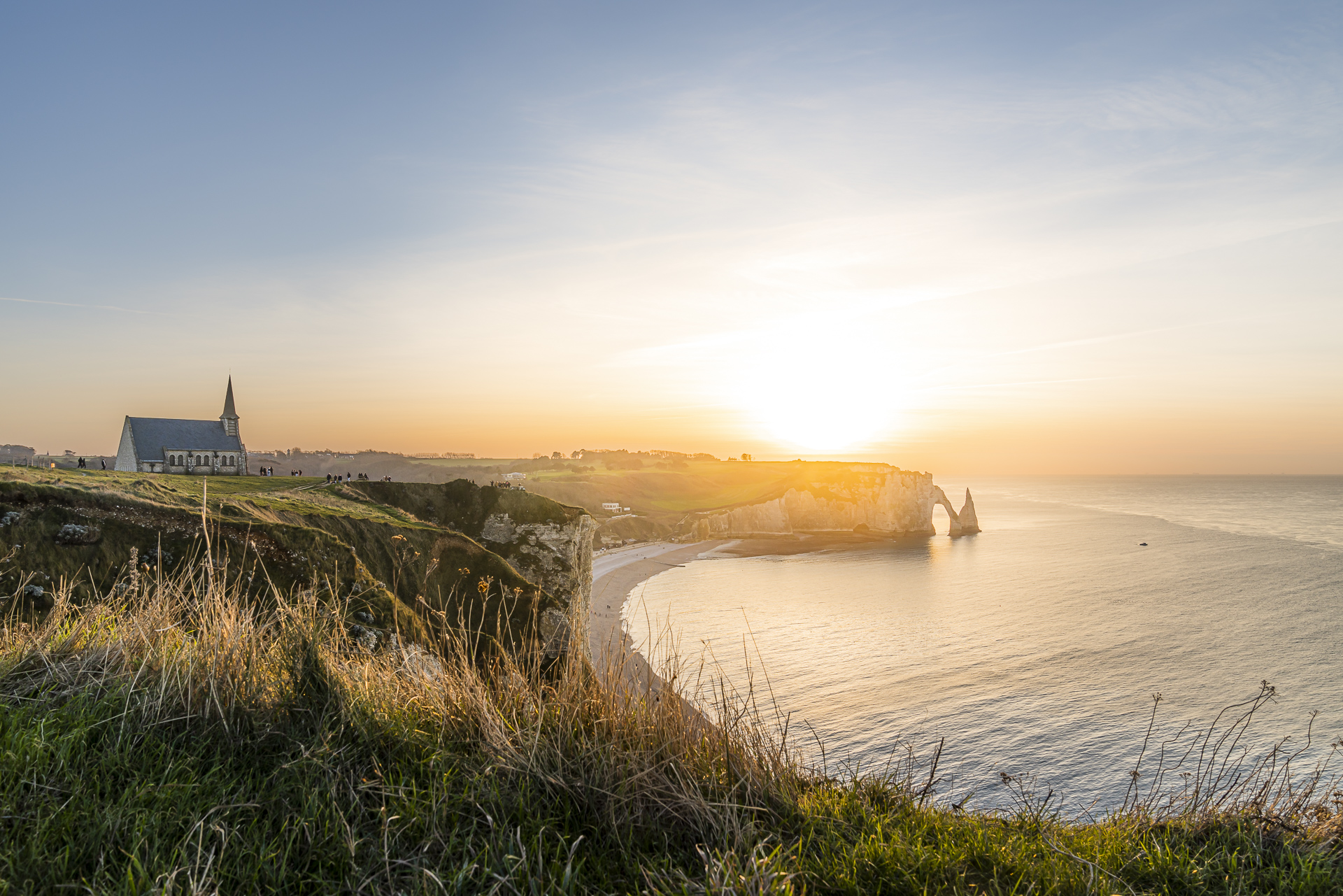
France road trip – highlights, tips and route of our tour
It has become our tradition – to use the time between the years for a journey that takes us somewhere where all the Christmas and New Year’s hustle and bustle is just a sideshow. Switch off, take a deep breath, enjoy and relax – a soothing change of scenery. After staying in Switzerland last year, we decided relatively spontaneously (at least by our standards) to go on a France road trip for the turn of the year 2021/2022.
Starting from Paris, we undertook a 14-day round trip through the “Midwest” of the country. These include Normandy, Brittany, the Loire Valley and a detour each to the Nouvelle-Aquitaine and Auvergne-Rhône-Alpes regions. The result: 14 varied days between the French Atlantic coast, wine landscapes and volcanic cones.
Below is an overview of the route and stopovers of our two-week France road trip. Afterwards I will show you my personal highlights of the individual stages. Who knows, maybe one or the other tip will serve as inspiration for a future trip to France.
France road trip: Route overview of our 14-day round trip
As was the case two years ago with the Denmark road trip, we do not start the France road trip directly in Switzerland, but overcome the first distance by train. With the TGV, the Zurich-Paris connection takes just four hours. And it’s worth putting out feelers for good deals at an early stage. We paid a price of 72 CHF for the round trip for two people in 2nd class. Quite inexpensive, in my opinion.
From Paris we continued by rental car. At first, we thought about renting an electric car. However, since not all of our booked accommodations had e-charging stations, we ultimately lacked the last bit of courage. In addition, the range of rentable electric cars is still quite modest – the same applies to cars with automatic transmissions. On site, however, it became clear that the public charging infrastructure is quite well developed and that the project would have been quite feasible.
If you want to follow the “road trip” 100% by public transport, you will find that the connections are not optimal. From Paris to Étretat, there are fast Flixbus connections (4h) as an alternative to the car. To get from Étretat to Cancale, however, you have to calculate around eight to nine hours in buses and trains (including several changes). The other stages of the journey are also not exactly parallel to fast and comfortable TGV connections.
Our route as well as all accommodations, sights and other attractions and restaurants we visit are located on the map below. The individual stages were divided as follows:
- 4 days on the Alabaster Coast (including a trip to Honfleur)
- 3 days at Mont Saint-Michel
- 2 days in Cognac
- 2 (very rainy days) not far from Limoges
- One day not far from Clermont-Ferrand (Auvergne)
- A day in the Loire Valley
- A full day in Paris at the start and end
Stage 1: Bonjour Paris
At the beginning and end of the France road trip, we made a stopover in Paris. Since I already know the French metropolis and its main attractions relatively well from previous city trips, this time the focus was not at all on “checking out” sights. Rather, I was interested in the status of the implementation of Anne Hidalgo’s “Transport Turnaround”. And yes, it actually has many times more cycle paths compared to the past. And no: the Avenue des Champs Élysées is (unfortunately) definitely not “car-free” yet.
We stayed not far from the train station Châtelet – Les Halles. This public transport hub is centrally located and connected to the Gare de Lyon (TGV arrival point) as well as the Charles de Gaulle airport (where we rented our car) without changing trains. The Quartier des Halles is also within walking distance of the Centre Pompidou, the Bourse de commerce with the contemporary Pinault Collection, and the Louvre. And after I had “ignored” the Louvre on all my previous visits to Paris, this time the comparatively few people who waited tempted us to make a spontaneous detour to the Louvre. We hadn’t pre-reserved any tickets and were in in less than five minutes – pretty awesome!
After the morning at the Louvre, we paid a visit to the free viewing terrace of the Galeries Lafayette, enjoyed delicious udon noodles in the “Udon Kishin“, let the December sun shine on our faces in the Jardin des Tuileries and dined in the recommendable restaurant ERH (1 Michelin star) just around the corner from our base – the Hôtel des Bains (partner link). Savoire-vivre par excellence.
Stage 2: Relaxing days on the Normandy Alabaster Coast
Our first day of road trips took us more or less directly to the Atlantic coast. Of course – between Paris and the Normandy Alabaster Coast, there are still one or two sights “to take away” along the way. There is Claude Monet’s house and garden in Giverny, the old mill of Vernon, the old streets of Rouen lined with pretty half-timbered houses, or the Abbey of Saint-Georges de Boscherville as a “school example” of Norman Romanesque. Instead, we opted for a culinary stopover and stopped for an extensive and phenomenally good lunch at the “Bec au Cauchois” (1 Michelin star). Well, you just have to set priorities.
We used the following three days for long coastal walks and exploration tours through the villages and towns on the Alabaster Coast. But first things first: the Bed & Breakfast “les Tilleuls” (partner link) in Étretat served as our base.
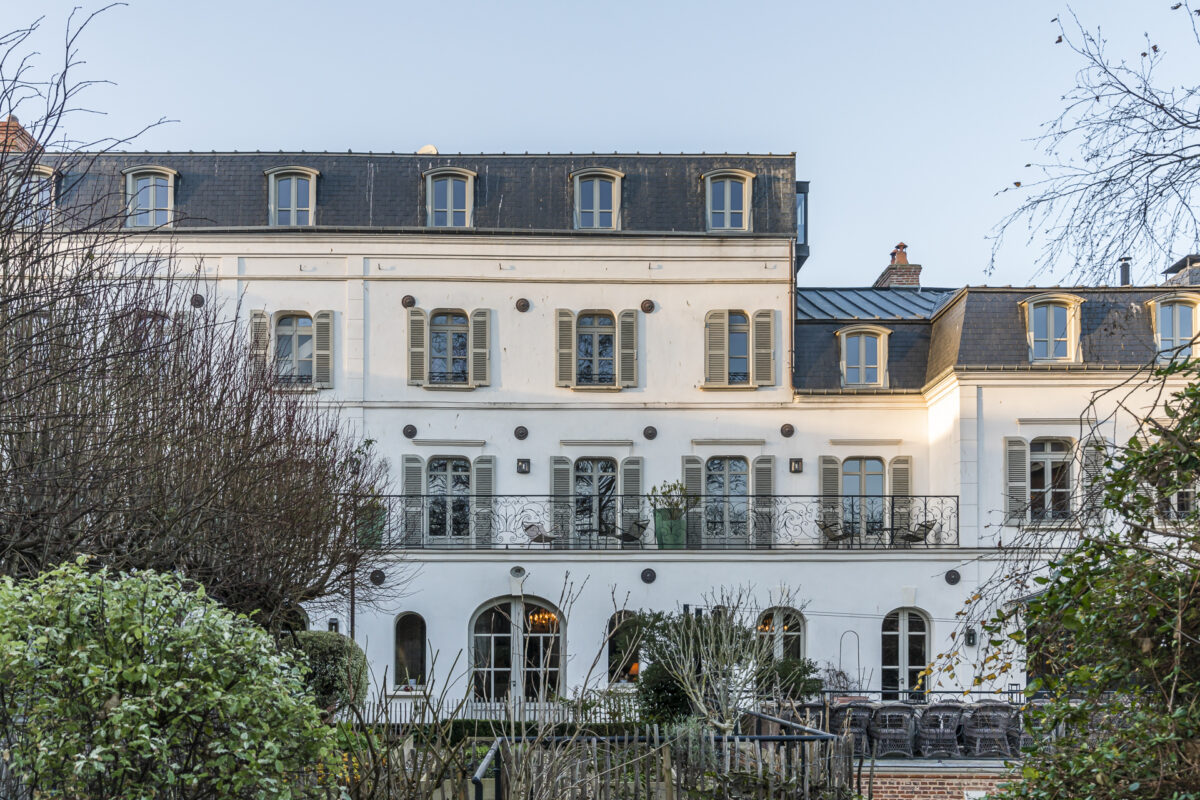
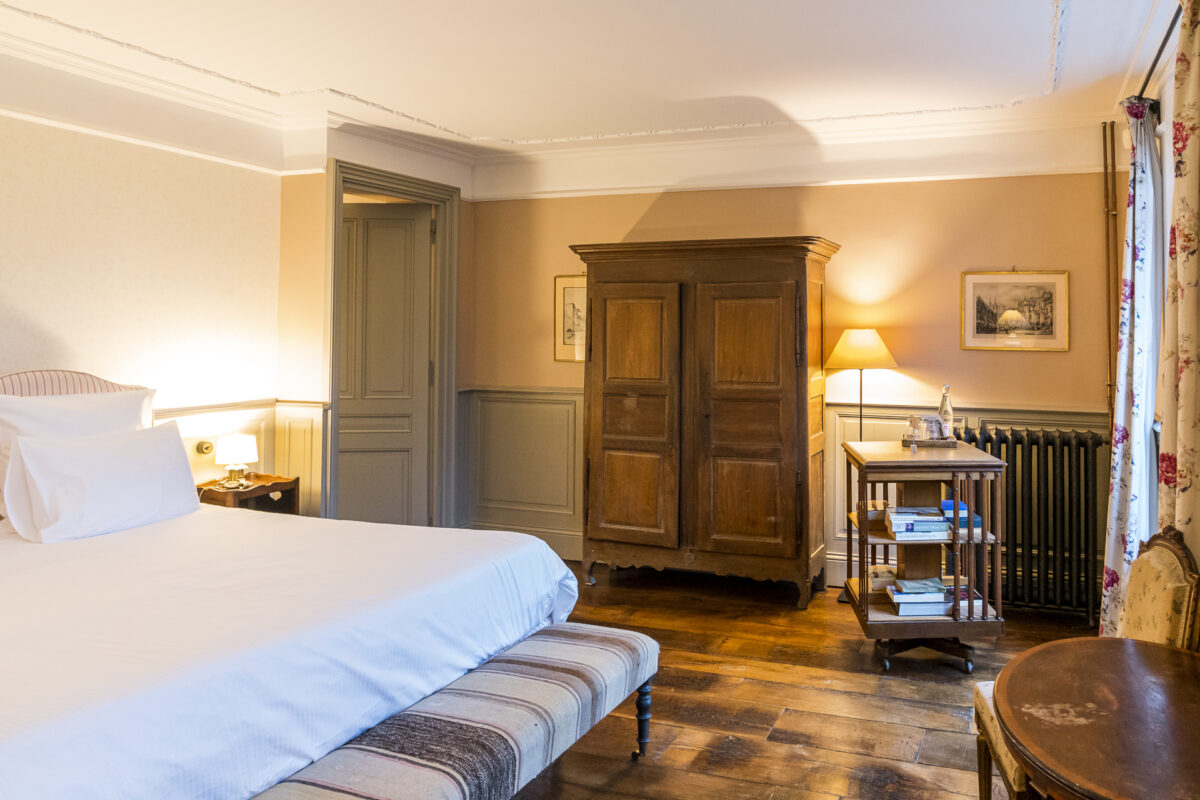
The small coastal town with seaside resort is a popular excursion and holiday destination, especially in the summer months, due to its imposing chalk cliffs. It’s not that there’s absolutely NOTHING going on here in December – but it’s much more leisurely. No crowds of people – but here and there families and couples walking along the cliffs on the Sentier des Douaniers, letting the fresh sea breeze blow around their noses and admiring the impressive scenery.
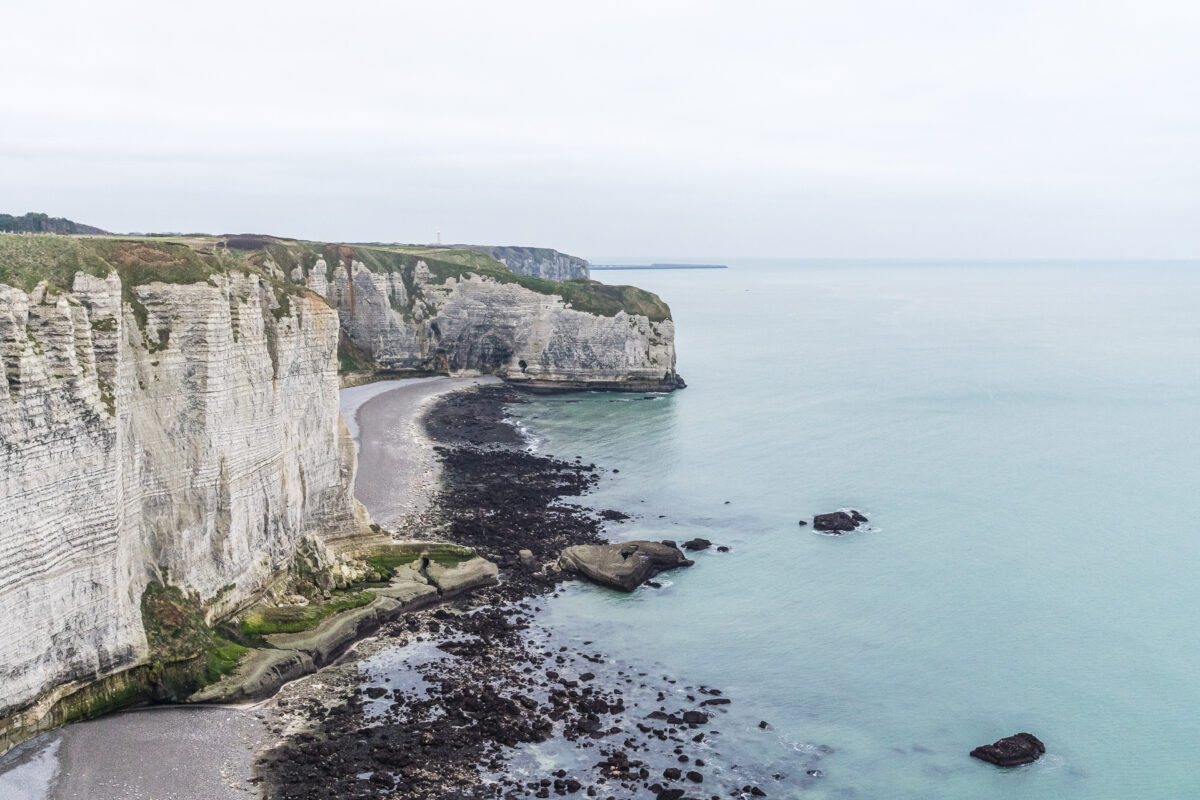
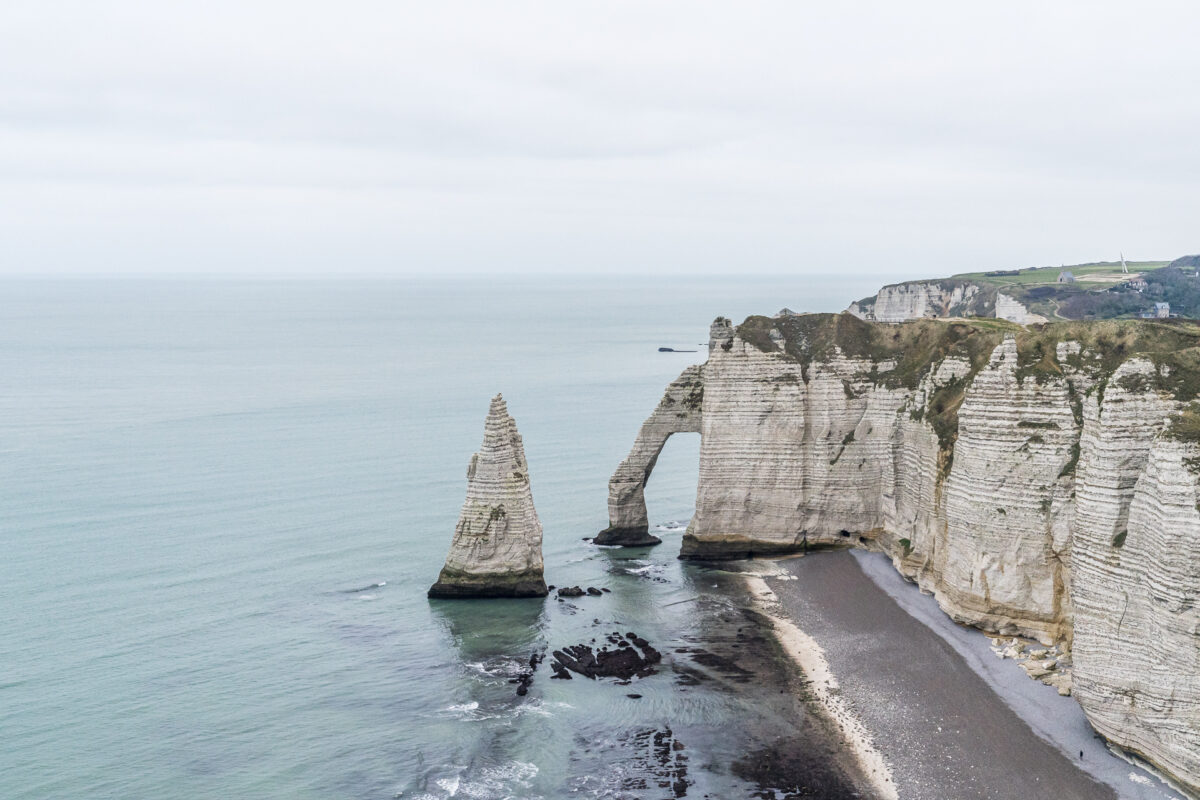
The bed & breakfast is just as relaxed. From here, the beach and the various restaurants of Étretat are within easy walking distance. At the same time, the sights in the neighbouring villages – the pretty village of Veules-les-Roses, which is one of the “plus beaux villages” of Normandy, or the port city of Fécamp with Cape Fagnet as the highest point of the Albaster Coast and the neo-Gothic and Neo-Renaissance-inspired “Palais Bénédictine” can be easily visited in the form of a day trip.
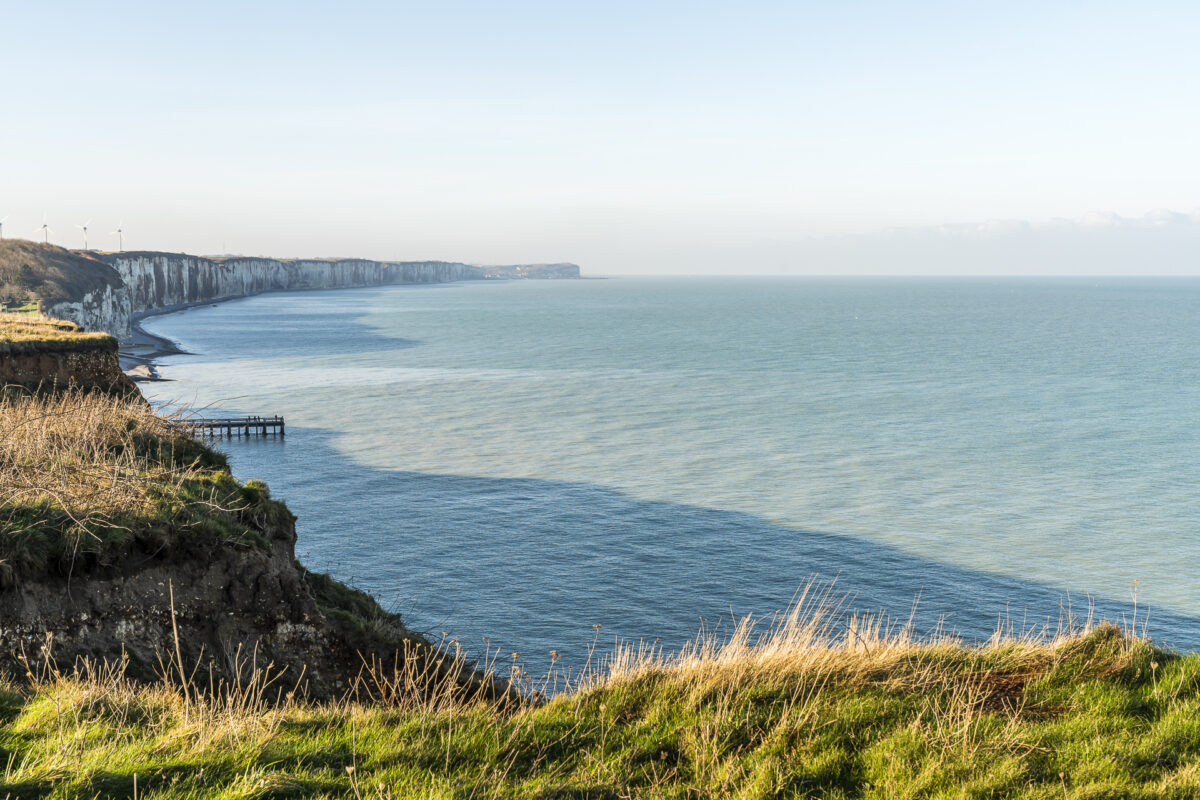
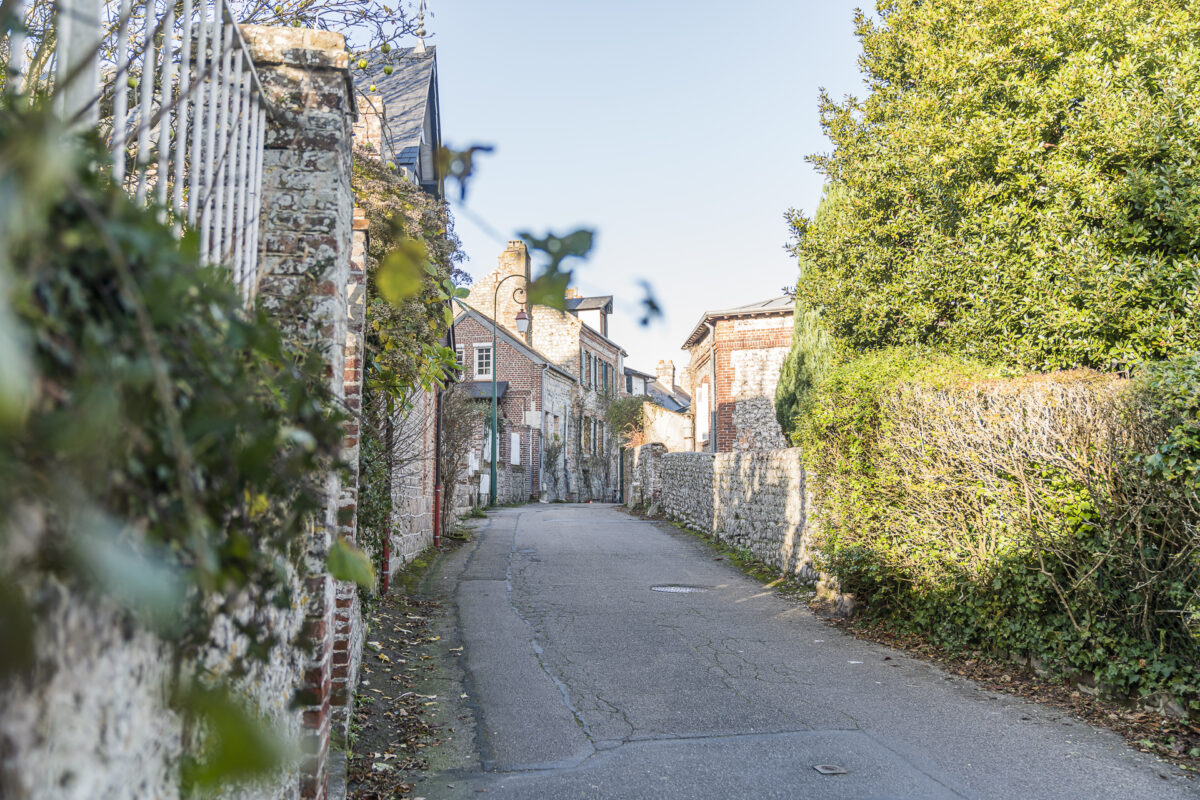
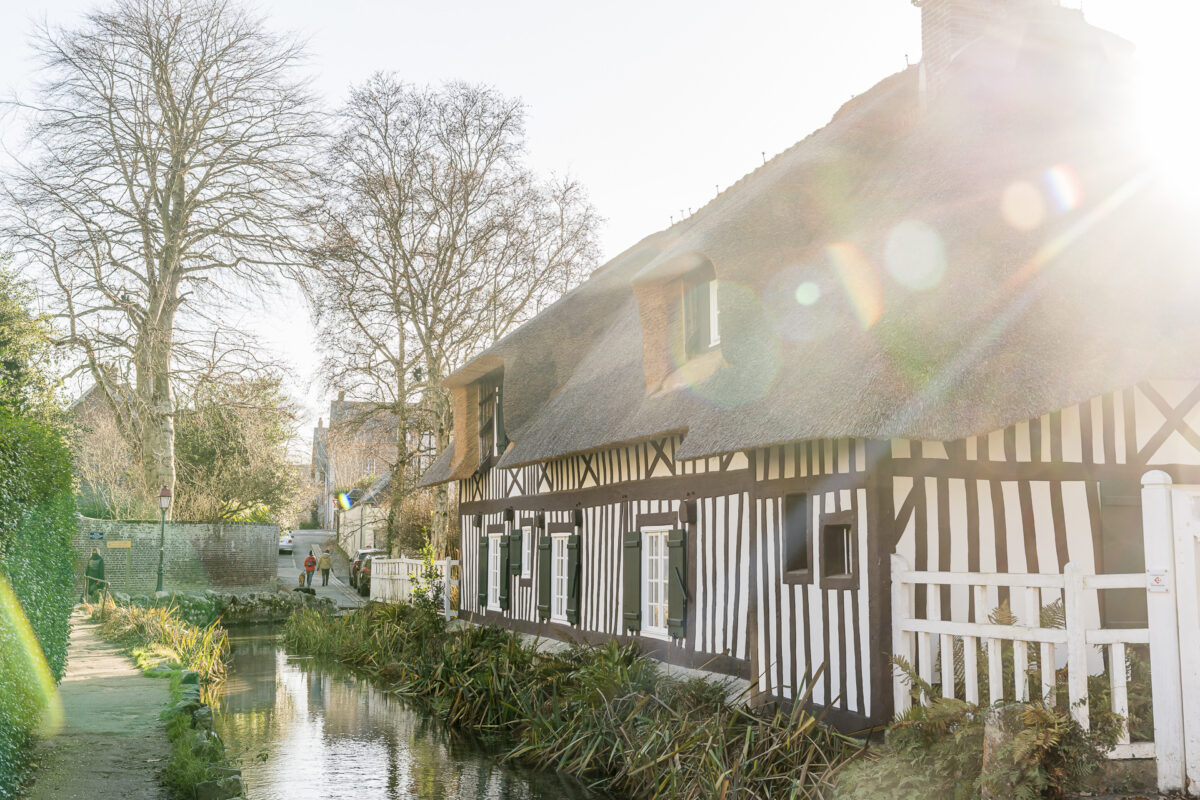
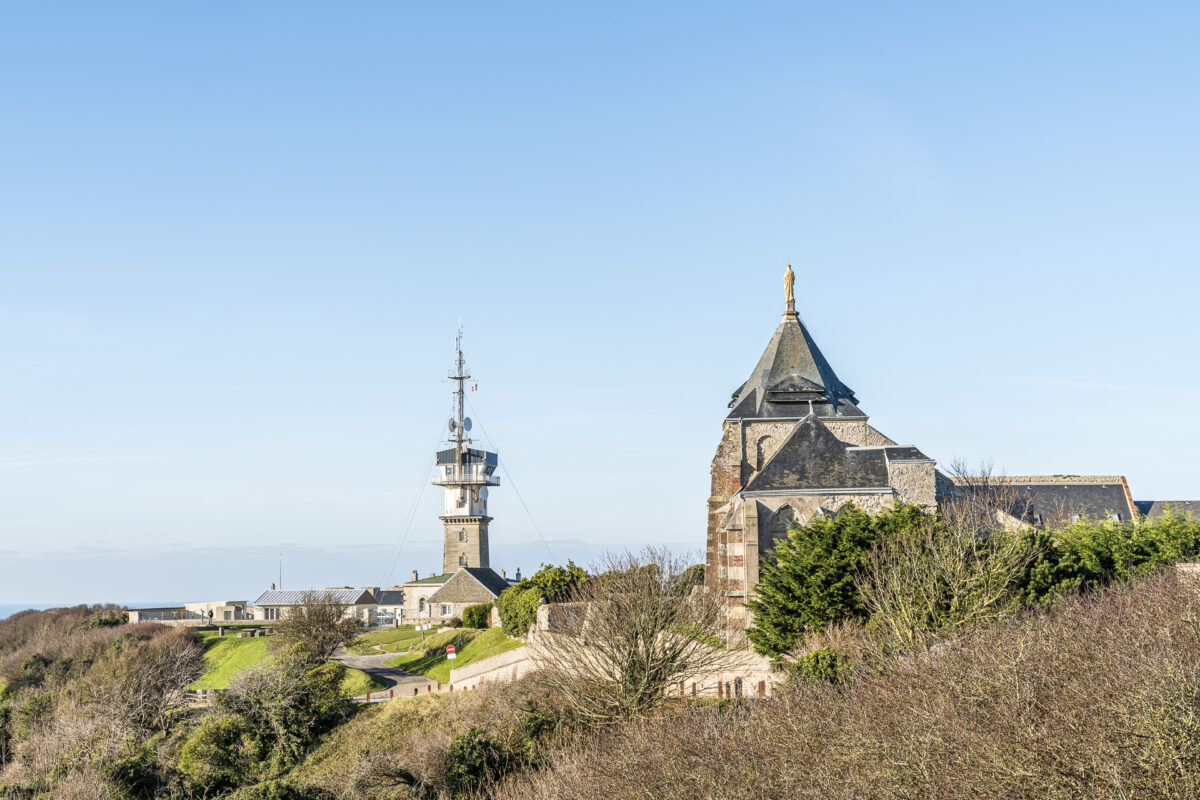
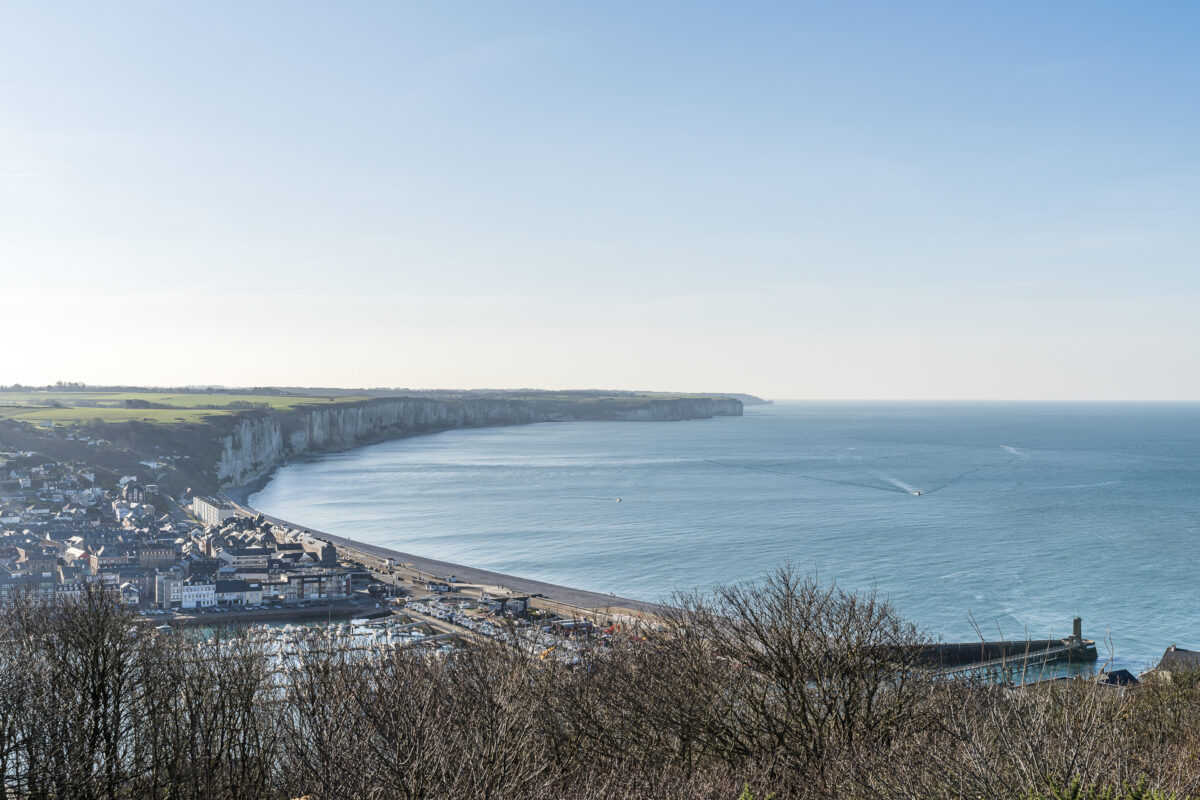
Our highlight in Étretat, however, is undoubtedly the enchanting view from the viewpoint at the Chapelle Notre-Dame-de-la-Garde of the imposing rock formations of the “Falaise” in the atmospheric sunset light.
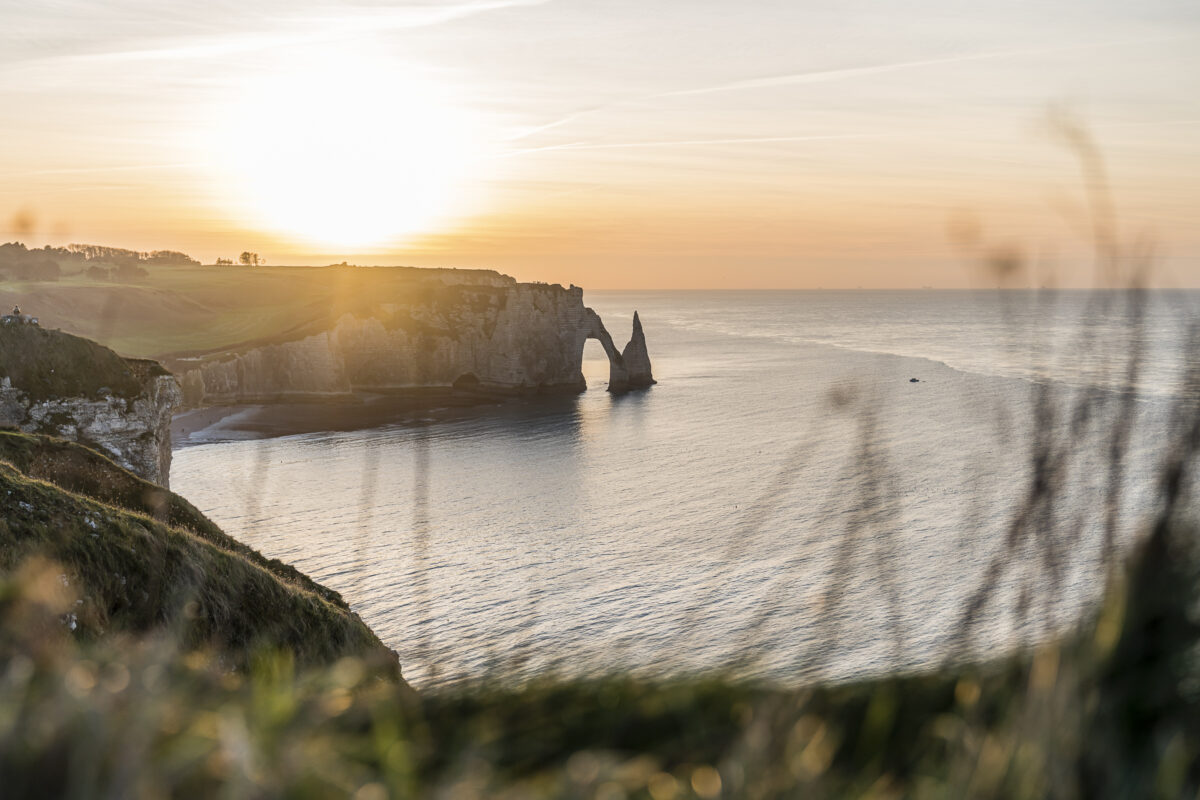
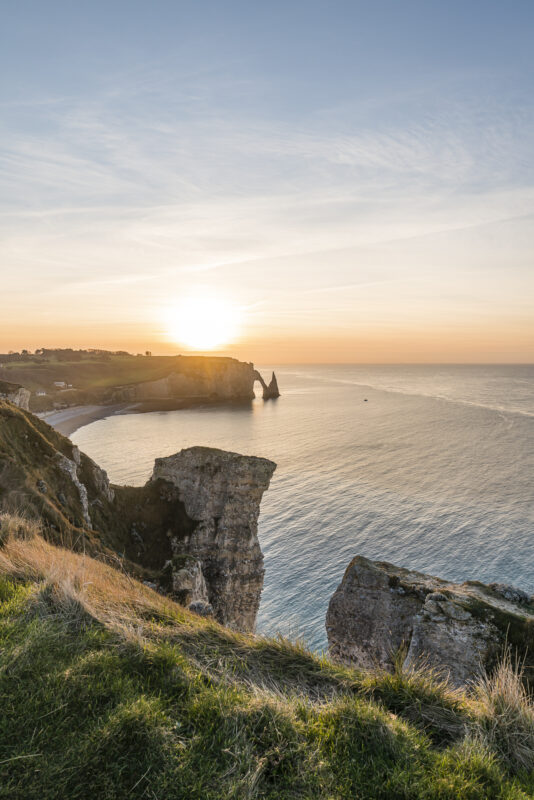
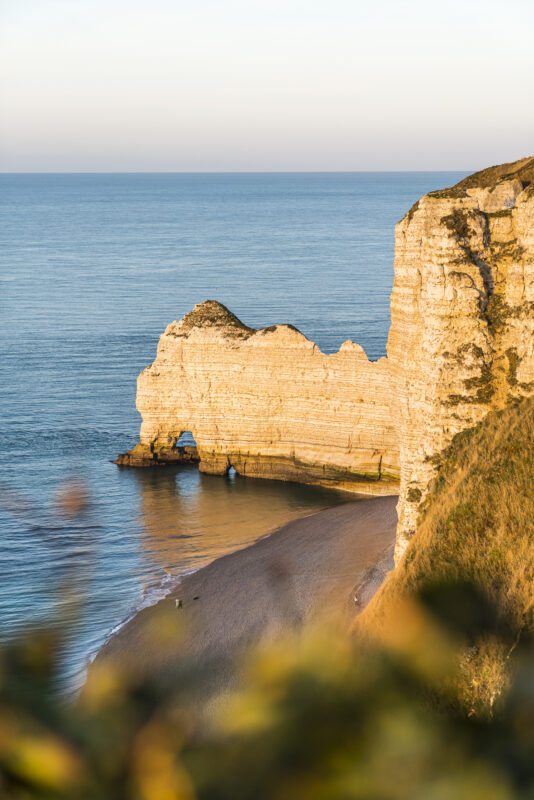
It was definitely worth making a more extended stopover here. At the same time, we can recommend “les Tilleuls” as a charming and stylish base. For breakfast, regional and fresh products are served and if you don’t feel like going to a restaurant in the evening, you can get fine platters with regional cheese and homemade products at les Tilleuls and taste your way through the extensive wine list. But we also recommend a stop at the restaurant Bel Ami (fresh market cuisine with Lebanese influence) or for those who would like it a little more dignified: the Donjon (but in comparison with the other Michelin restaurants we visited on this trip, it is rather in the back third).
Stage 3: Le Havre – Honfleur – Bayeux
From Étretat, we not only explored the Alabaster Coast, but also made a detour to the port city of Honfleur in the southern department of Calvados. In between, le Havre – the largest city in Normandy – would also be a good stopover. If you’ve never been to Le Havre before, you should definitely take half a day to visit the architecturally idiosyncratic, but extremely interesting city centre. You can find impressions of this in my somewhat older blog post about Le Havre.
Honfleur, with its medieval-looking harbour basin (Vieux Bassin), is the direct opposite of modernist-looking Le Havre. Half-timbered facades, colourful fishermen’s cottages, narrow streets – yes, Honfleur is an extremely charming town. The view into the church of St. Catherine is also impressive. The two-nave seamen’s church with a separate tower was built in the 15th century and is made entirely of wood.
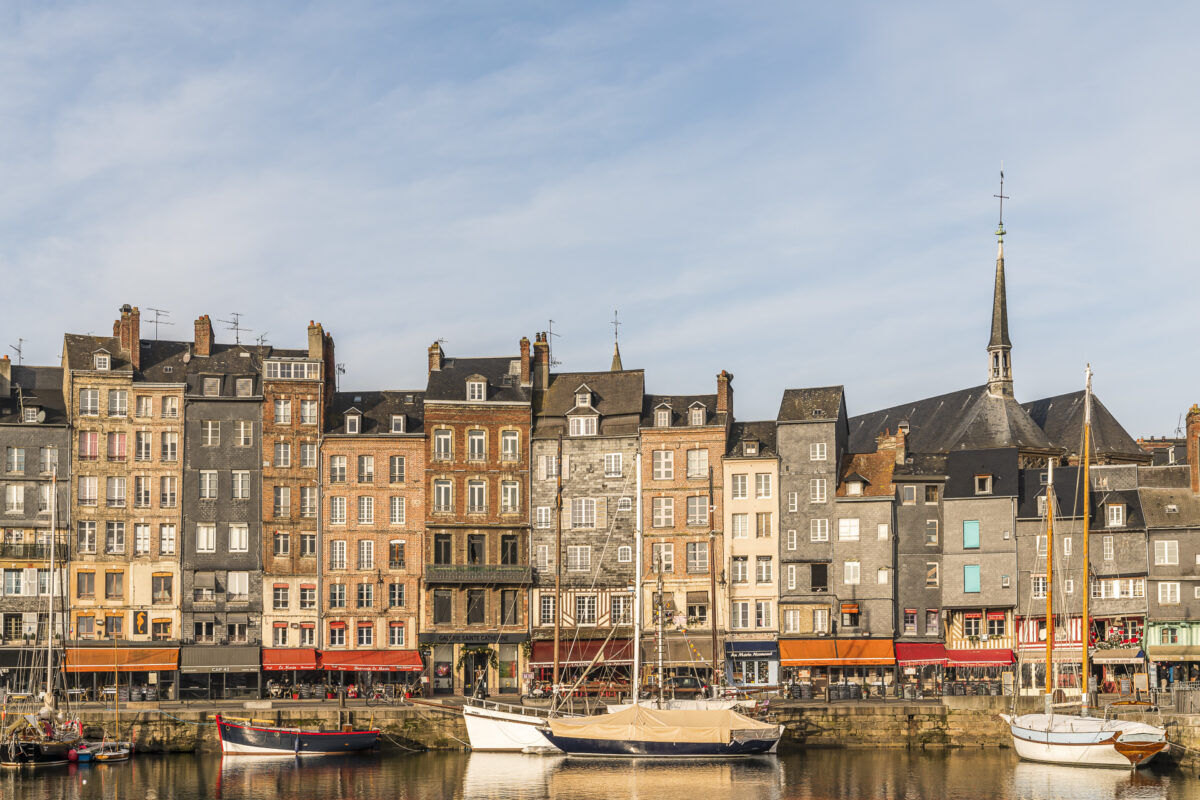
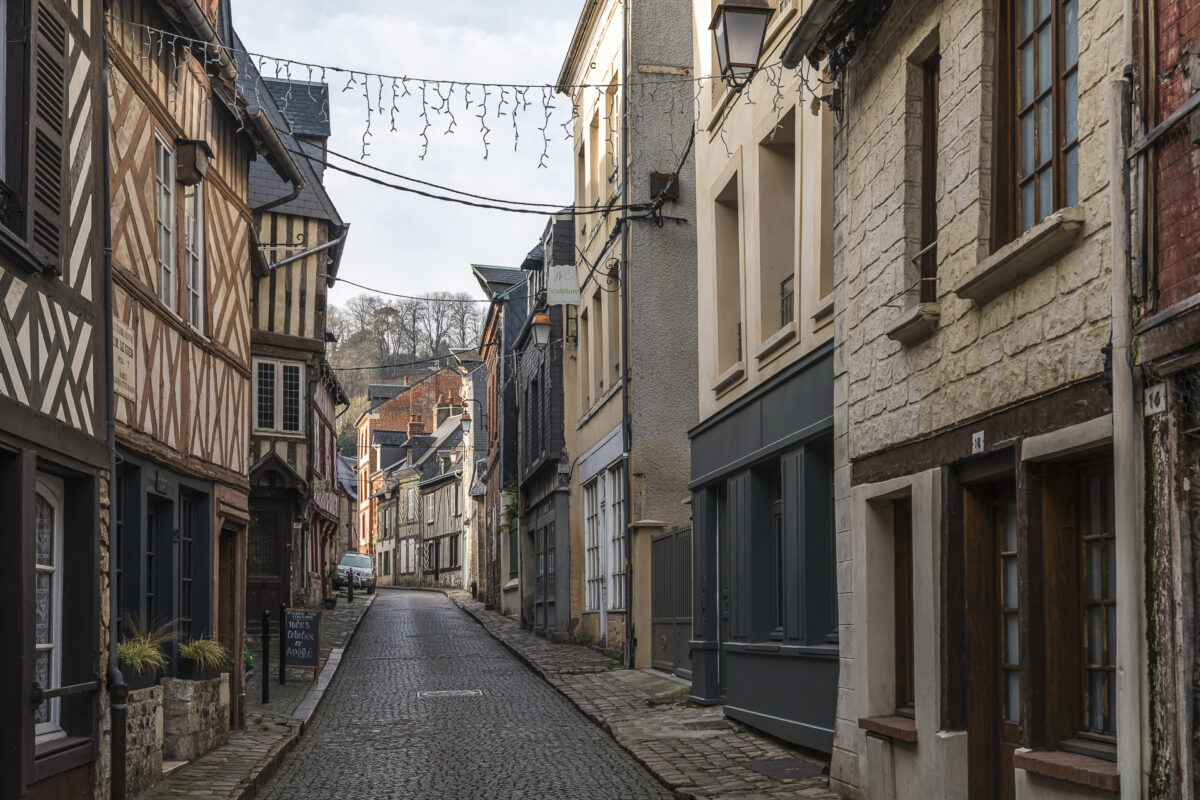
A beautiful view over the city and the “Pont du Normandie” behind it – one of the largest bridges in the world can be found from the local mountain Mont-Joli. This can be reached with a good 15-minute walk from the harbour basin. Afterwards, it’s worth stopping off at La Fleur de Sel (awarded a Bib) or the equally promising-looking SaQuaNa.
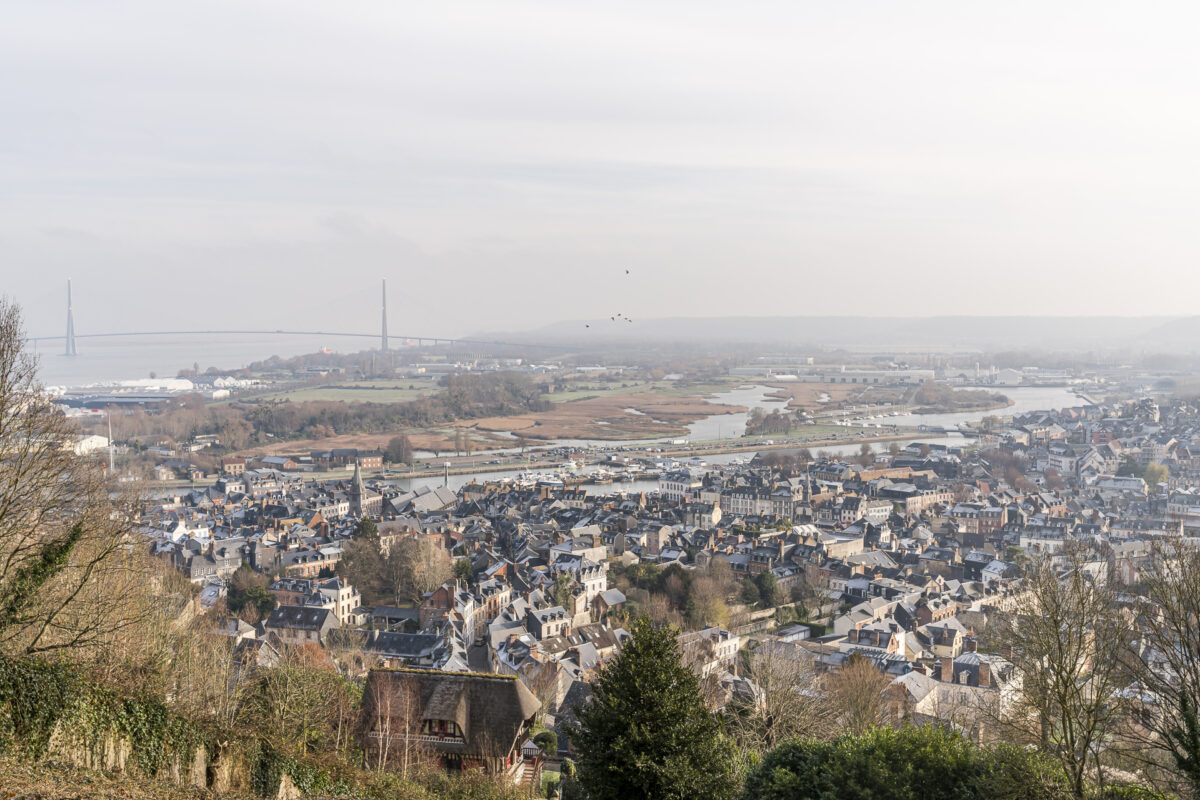
The journey from Étretat to Honfleur takes just under 45 minutes. This is well doable as a day trip. If you are interested in the coastal towns further west (around Caen) – I recommend changing the base after four to five days. We also use the drive to our next stopover at the bay of Mont Saint-Michel for a short stroll through Bayeux (whose main attraction is a tapestry, by the way) including a restaurant stop (you can probably guess by now where our focus was on this trip) and a walk along the Omaha Beach, which is not far from Bayeux. Omaha Beach is one of the D-Day landing beaches. If you are interested in this topic, you can find more information on the Normandy Tourism website.
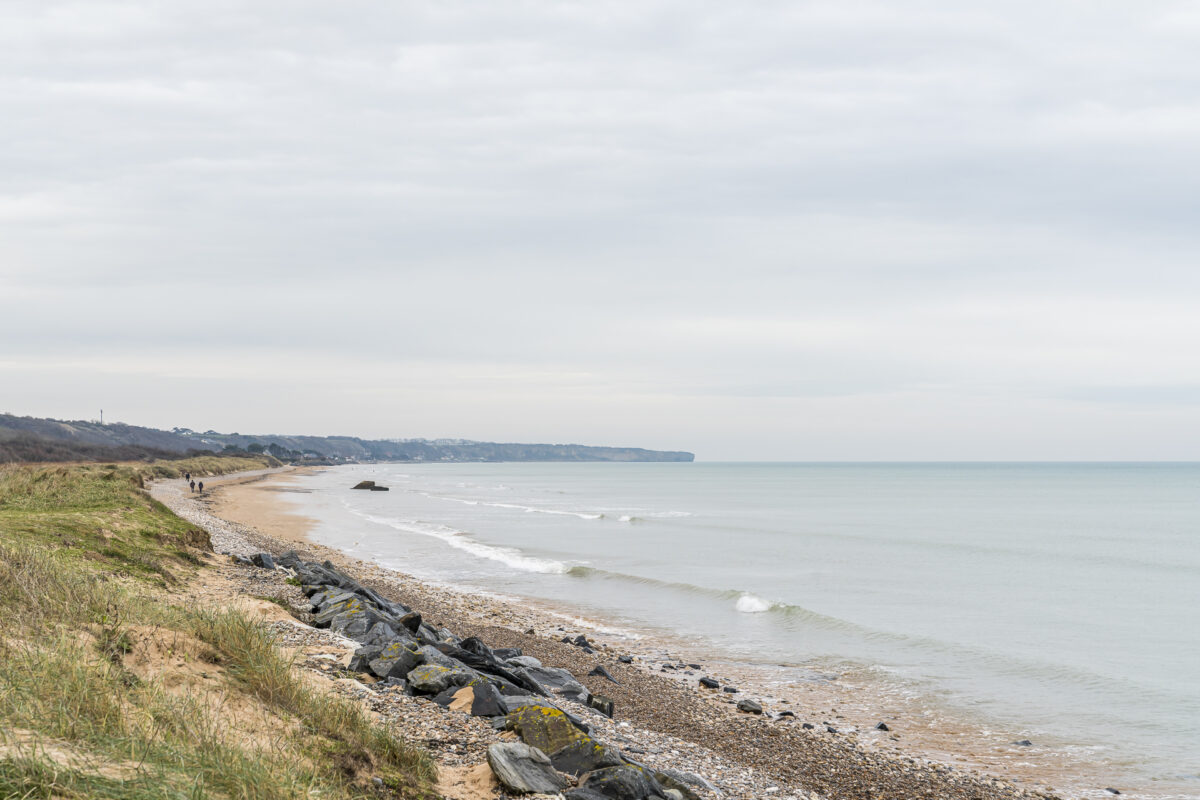
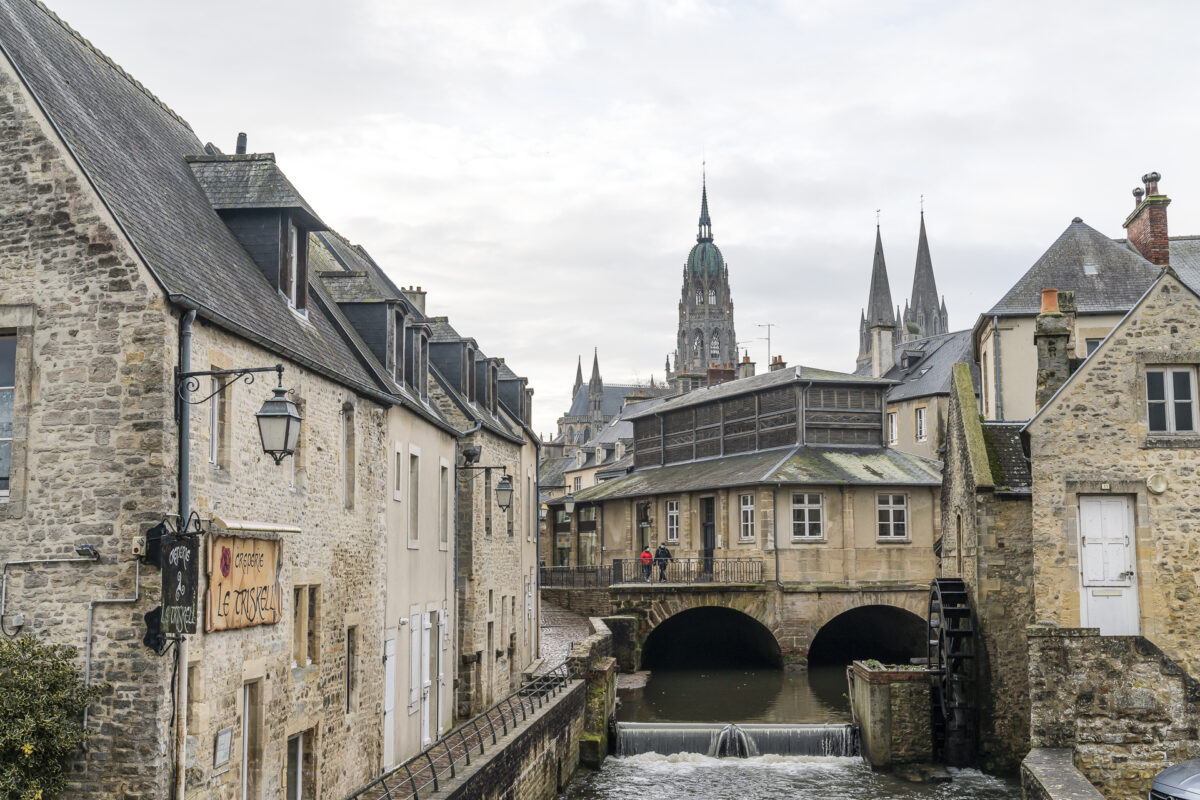
Stage 4: the magic of the bay of Mont Saint-Michel
As written, after 4 nights in “Les Tilleuls” Étretat, we continued our road trip towards the bay of Mont Saint-Michel. The bay of Mont Saint-Michel is located between Normandy and Brittany, a good 200 kilometres southwest of the Alabster coast. While Mont Saint-Michel is still part of Normandy, our accommodation is already on Breton soil. We check in for three nights at the stately Château Richeux.
The property, which also includes a “farm”, beautiful holiday homes (Maisons de Bricourt) with sea views and a spa, is run by the Roellinger family. Hugo Roellinger continues the natural, fresh and spice-based culinary tradition of his father Olivier Roellinger in the two-Michelin-starred restaurant Le Coquillage and was honoured with the title of “Chef of the Year 2022” by GaultMillau at the end of November 2021. The view of the bay with the strongest tides in Europe, the tranquillity, the phenomenal food, as well as the stylish Bain Celtiques as a wellness oasis – a dream! Unfortunately, we were only granted a few hours of sunshine during the three days on site and all the more rain.
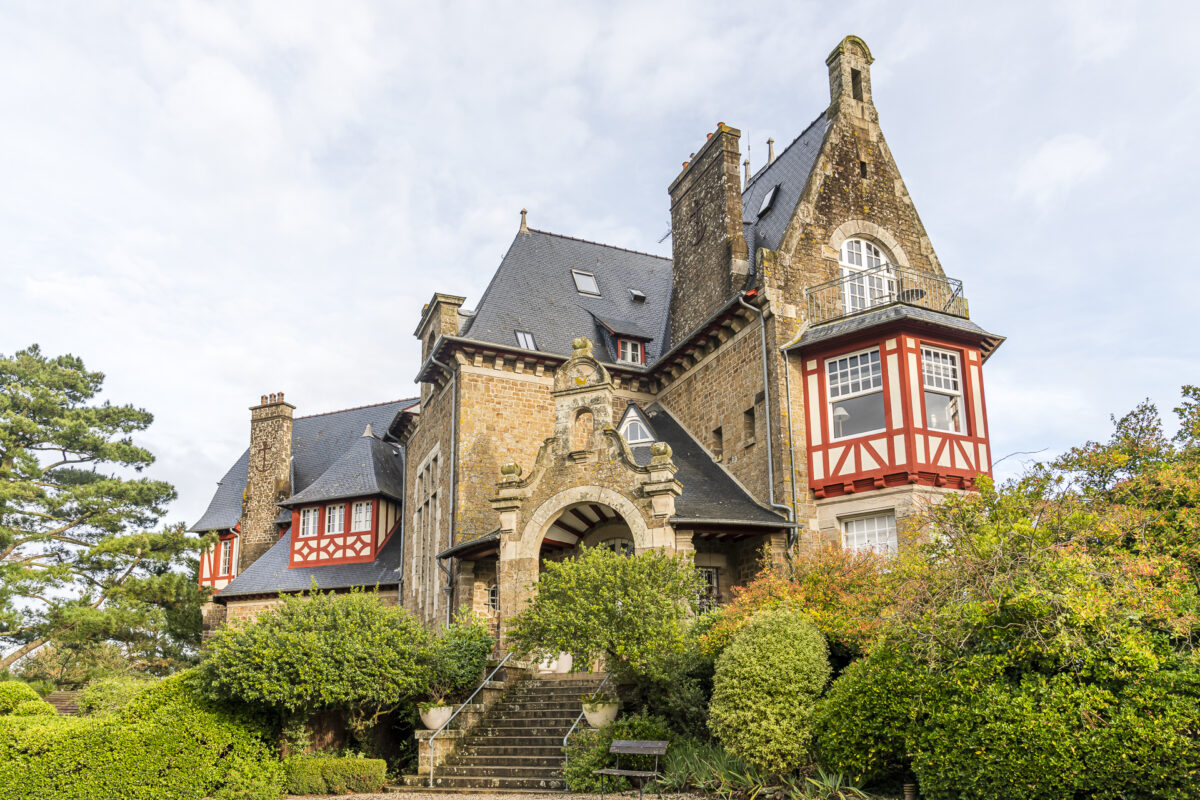
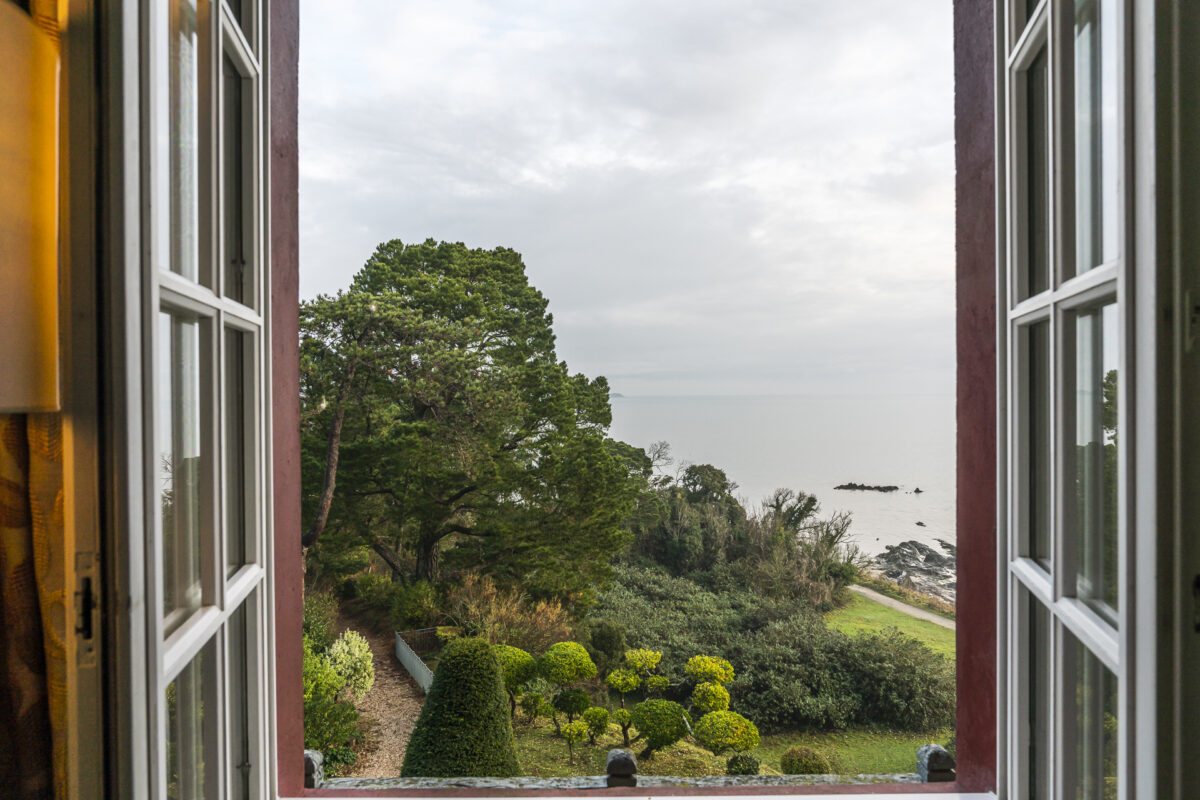
This was also the case during our detour to Le Mont-Saint-Michel – probably the most famous sight in Normandy (if not in the whole of France). The huge parking lot, which can accommodate up to four thousand cars at a time in summer, is deserted on this gray December day. The free shuttle buses, which take you from the car park over the bridge to the abbey in just under 15 minutes, still run diligently back and forth.
If you have enough time, you can also cover the route on foot (about 30 to 40 minutes walk from the car park to Mont-Saint-Michel). The scenery is impressive – in this grey one it seems to me almost a bit more imposing and threatening than in the “fair-weather photos” I have seen so far.
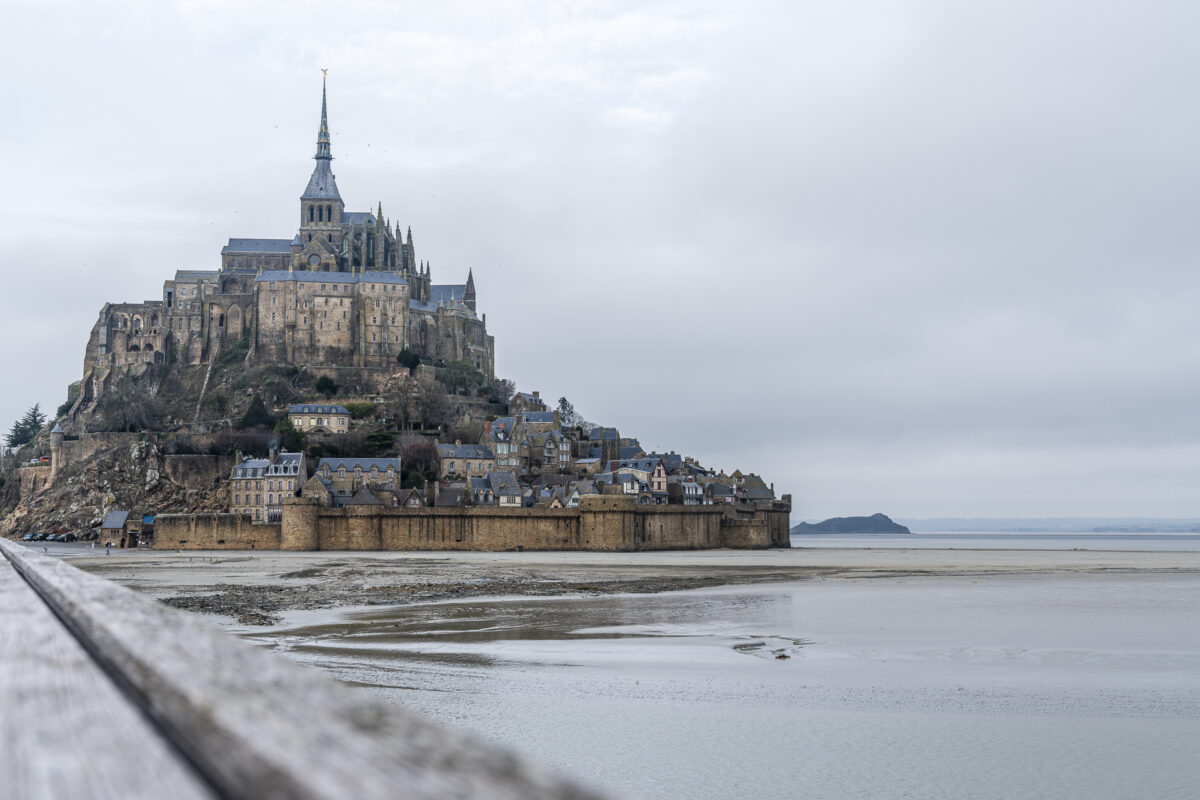
The car park as well as the Mont-Saint-Michel are accessible 24 hours a day, 7 days a week. The parking fee for cars is 9.80 euros for 24 hours in low season. What is really worthwhile in terms of views and where there are no additional costs (apart from the parking fee) is the walk along the “city wall” from the Tour Nord down to the city gate. For the visit of the abbey (note that the monastery is closed on 25 December, 1 January and 1 May), on the other hand, an additional 11 euros must be included as an entrance fee.
Stage 5 : Get a taste of Brittany
With Château Richeux, we have deliberately chosen a base that allows us to explore Mont-Saint-Michel with enough time and without a long journey, as well as to sniff some “Brittany air”. Due to the very mixed weather, however, this sightseeing part turned out to be shorter than expected. Nevertheless, we discovered some really pretty corners.
From Château Richeux, a beautiful coastal road leads via Cancale, the next larger town, to the rugged headland “Pointe du Grouin“. From here, a variety of birds can be observed on the opposite side of the country’s L’Île. The view extends from here to Mont-Saint-Michel and when the weather is nice, it is also worth coming here for the sunset.
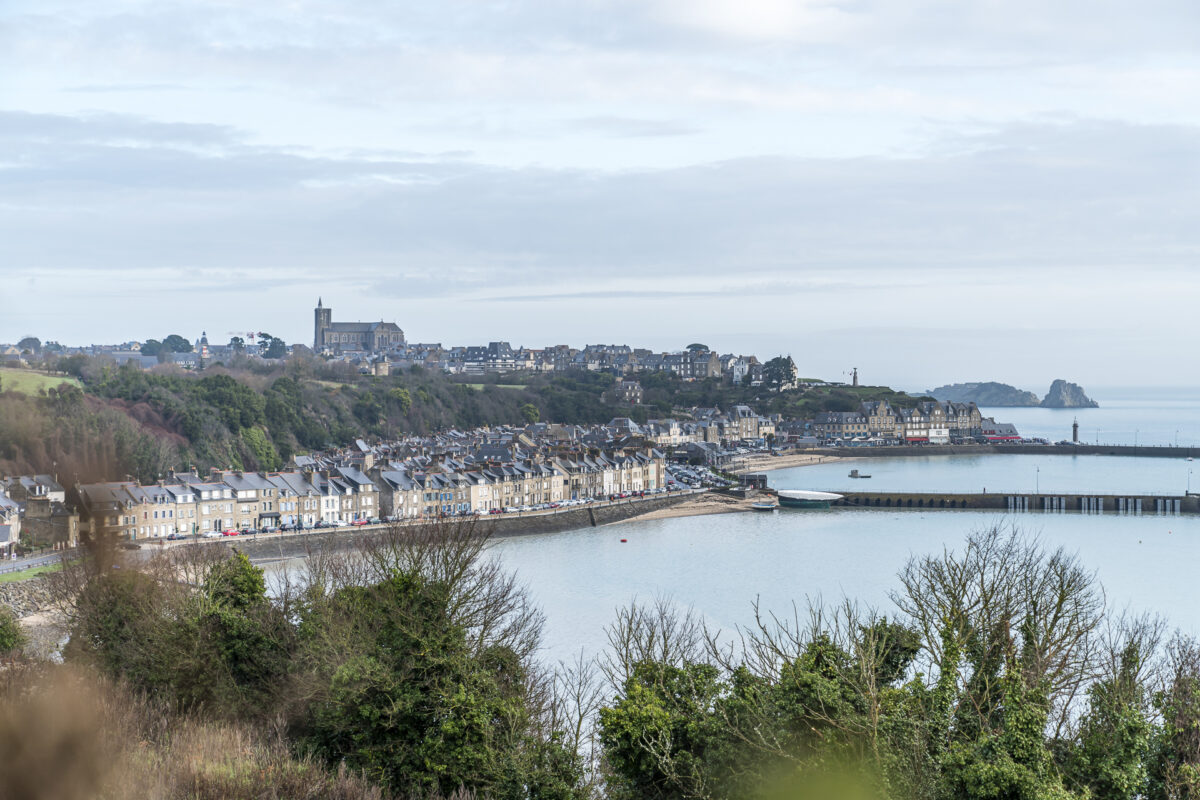
Less than a thirty-minute drive to the west is the former “pirate’s nest” of Saint-Malo. The old town, surrounded by imposing fortress walls, forms an impressive backdrop and can still be circumnavigated today on the former battlement. In the summer months, Saint-Malo is also a popular seaside resort.
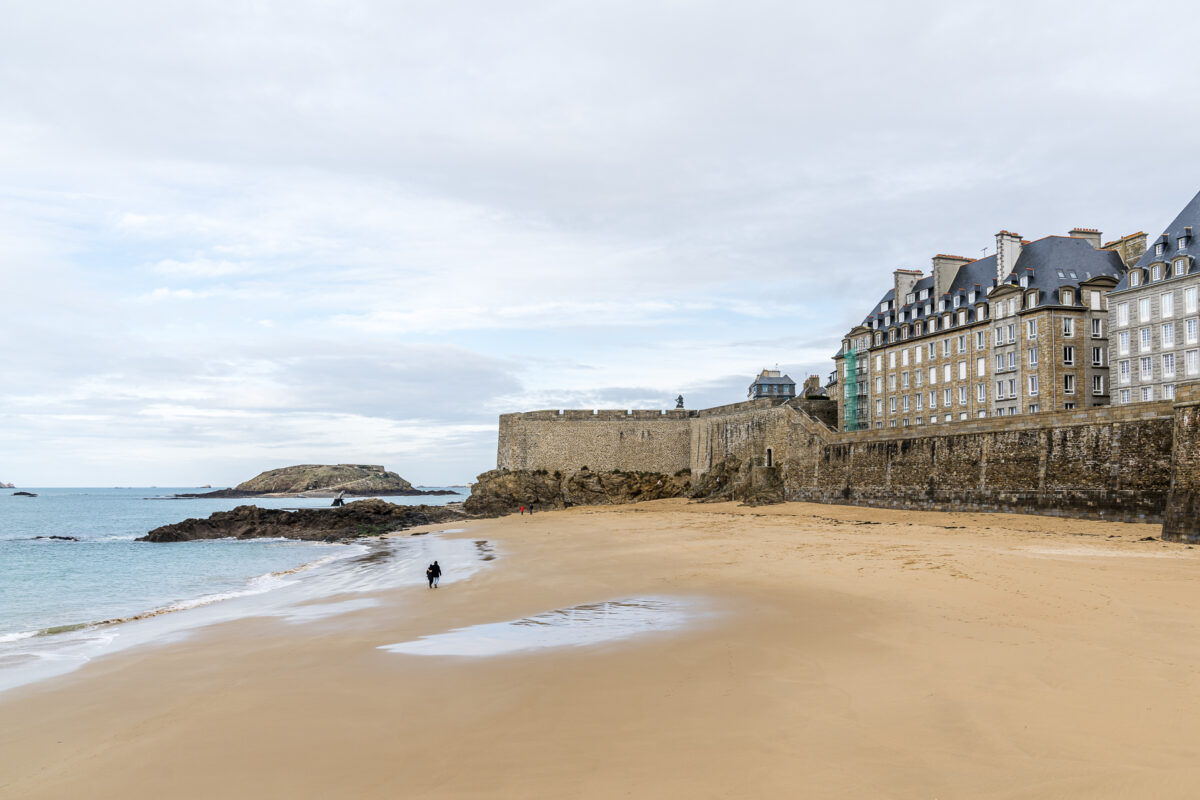
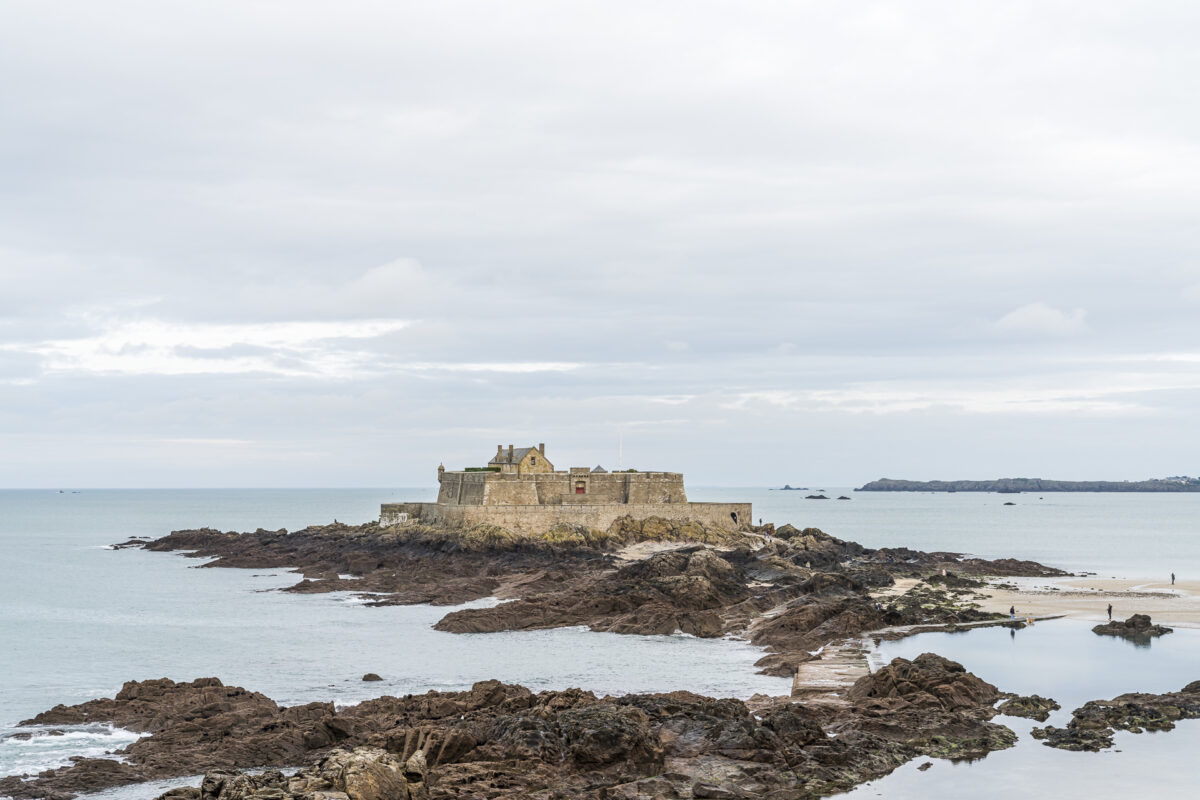
Another highlight for me was the walk through the old town of Dinan. This small town is also surrounded by historic old town walls to this day, although part of it is unfortunately no longer accessible due to recent instabilities. In any case, Dinan is particularly picturesque on the “Rue du Petit Four“, which leads from the old town down to the banks of the Rance.
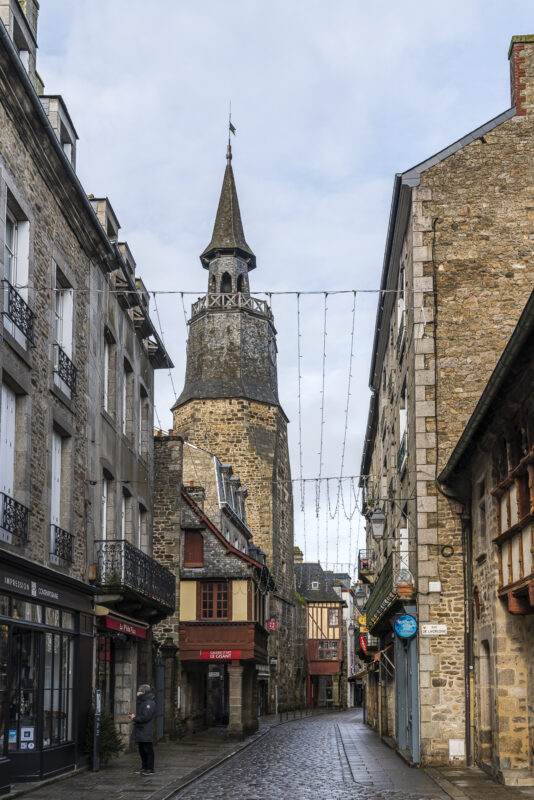
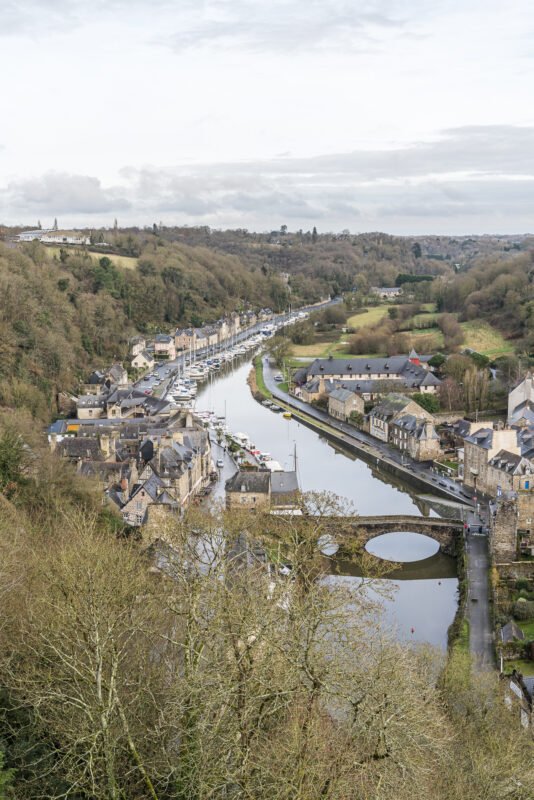
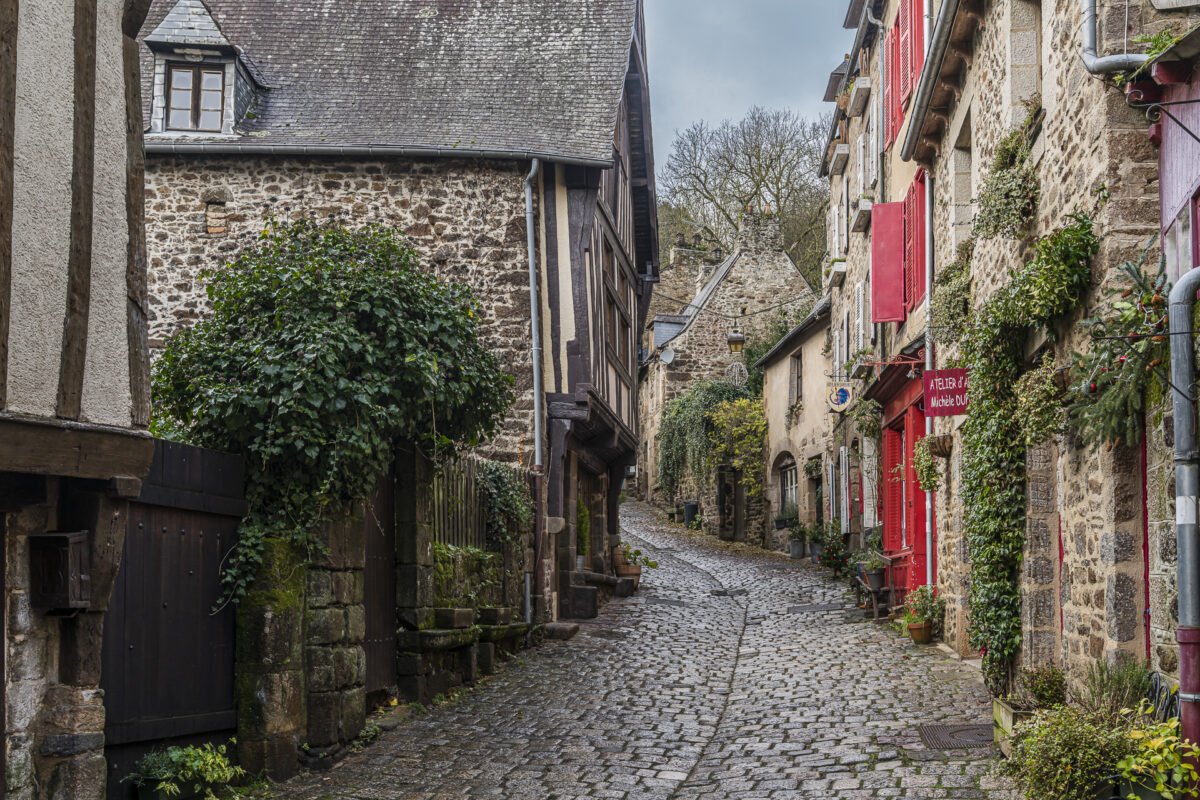
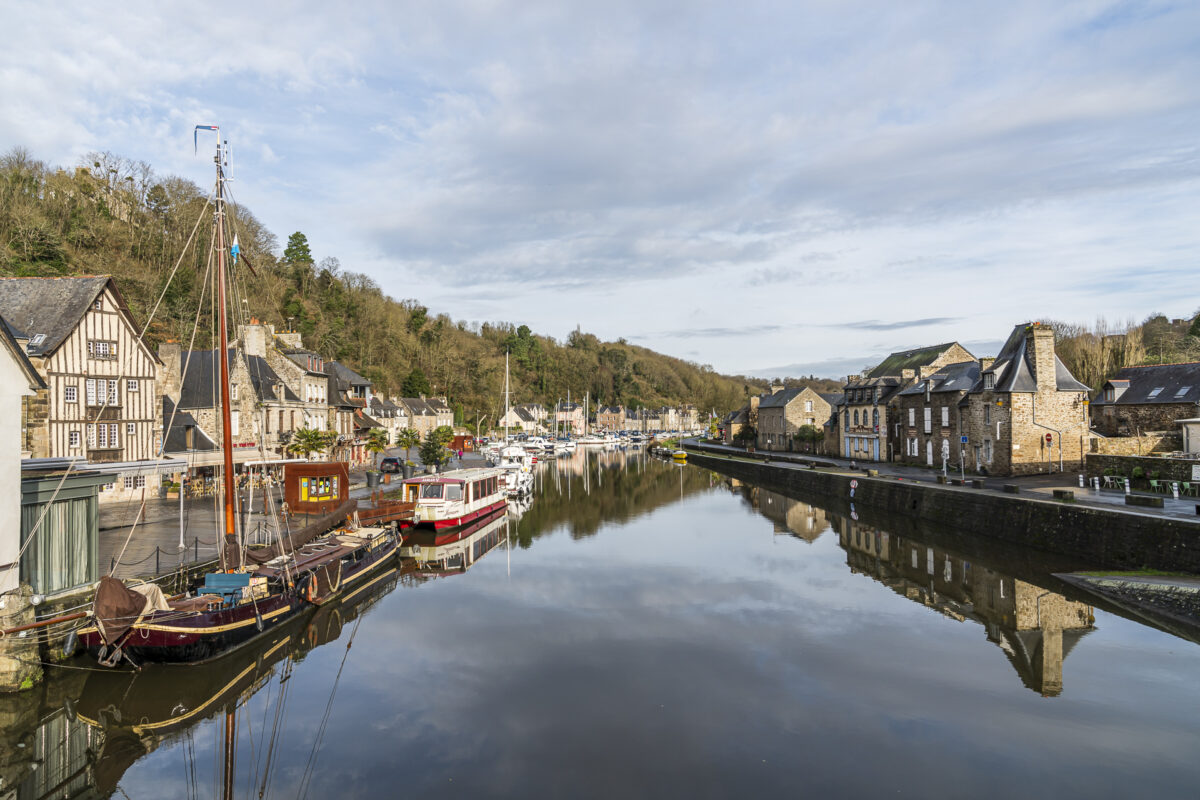
Stage 6 : Delicious Cognac
If, while reading these lines, you are wondering how we actually came up with this route or how we chose the individual stops, then it should be mentioned at this point that due to the holidays (Christmas/New Year’s Eve), we have also aligned ourselves with the respective opening hours of favorite or exciting-sounding restaurants. This also explains our two-day stay in Cognac. We were looking for one or two suitable stopovers on the route between the bay of Mont-Saint-Michel and Clermont-Ferrand in Auvergne. We came across the Hôtel Chais Monnet & Spa (partner link) including the restaurant Les Foudres (1 Michelin star), which belongs to the hotel.
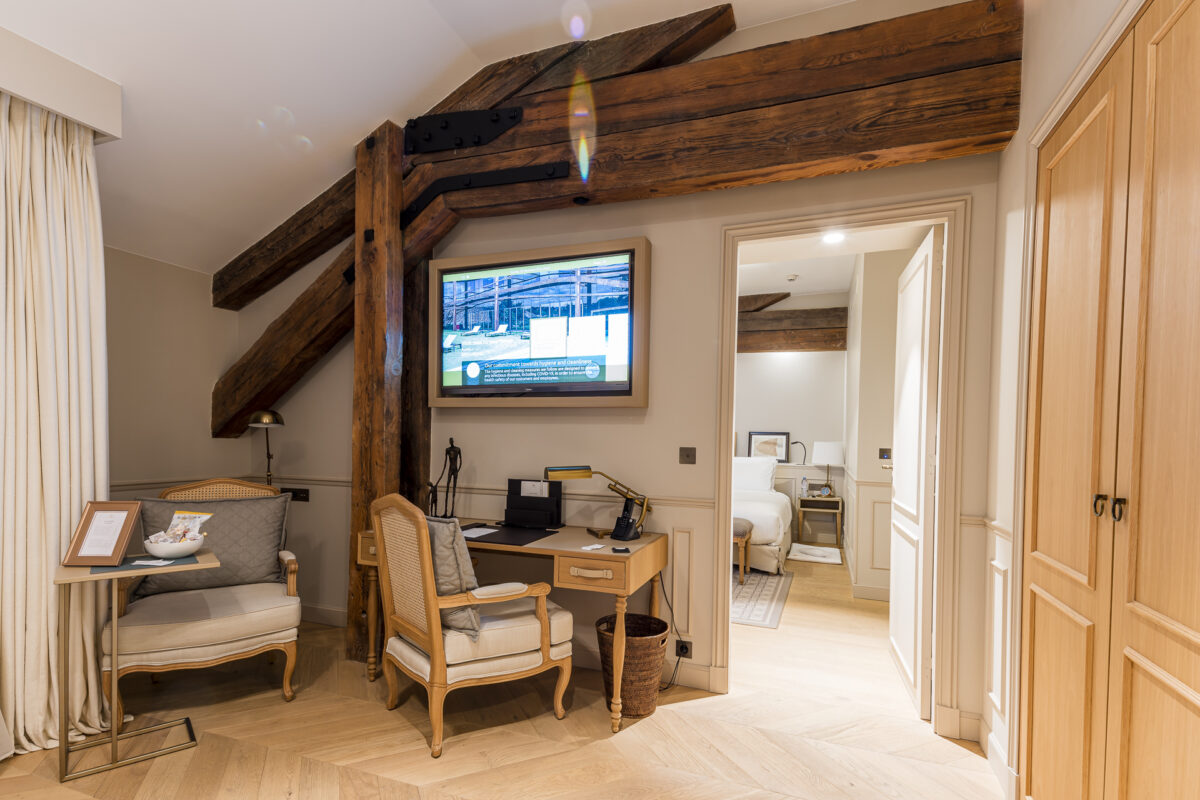
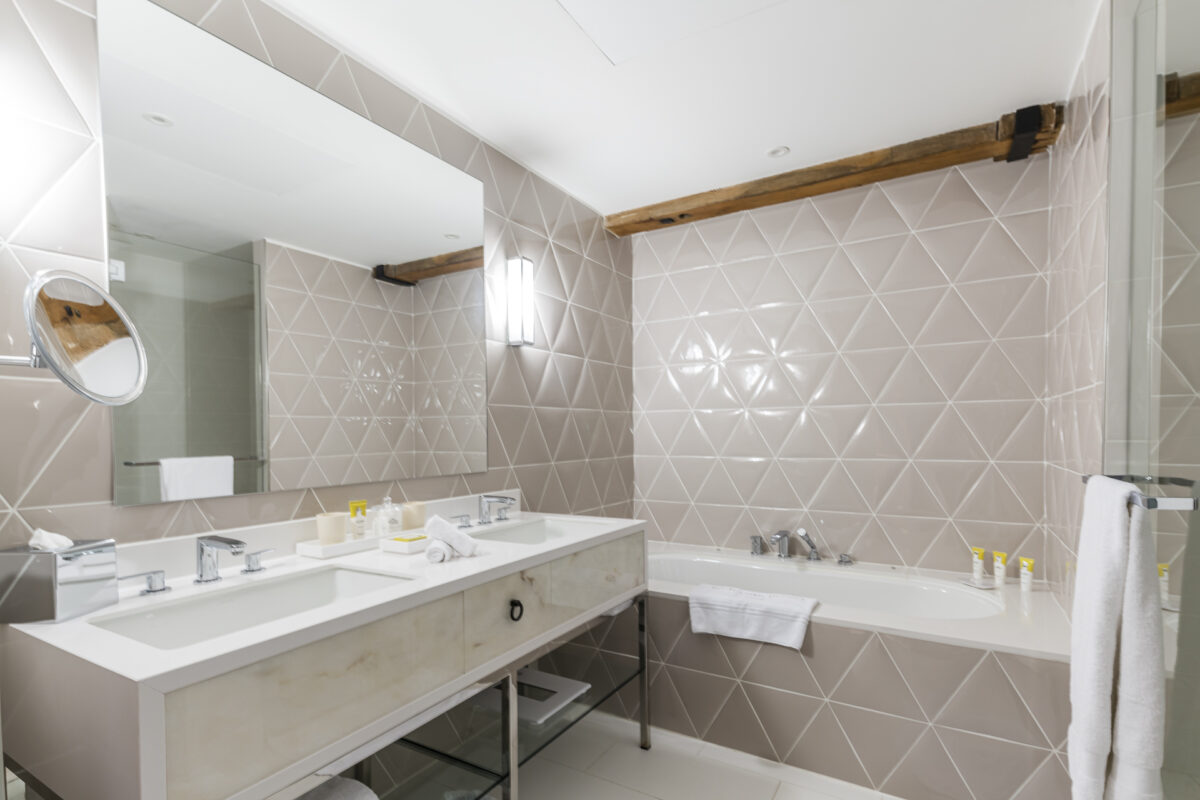
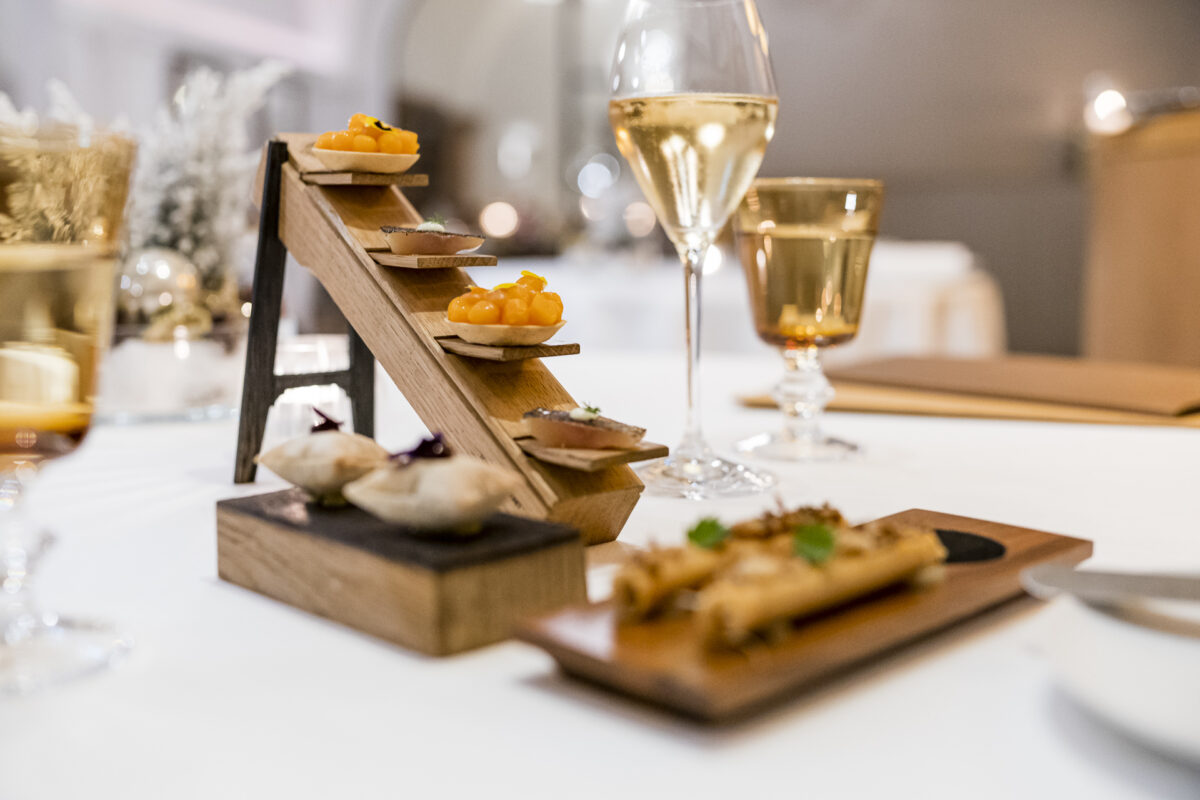
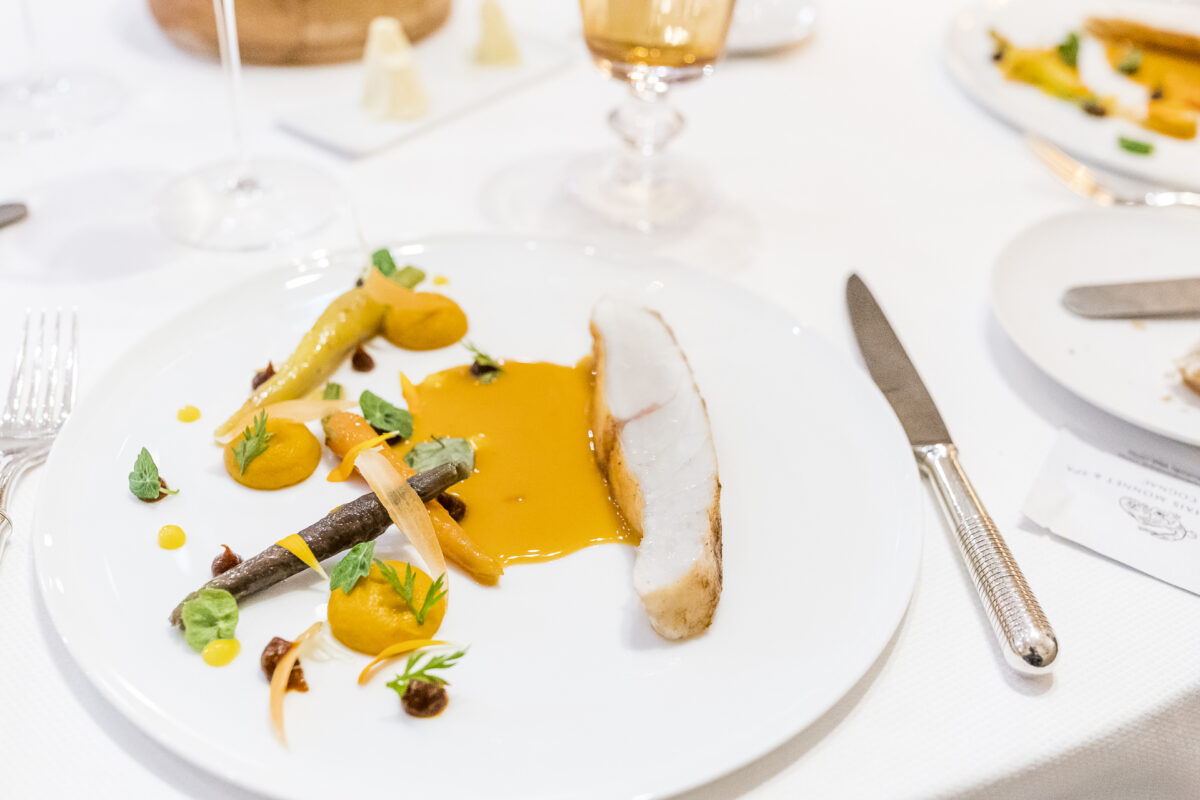
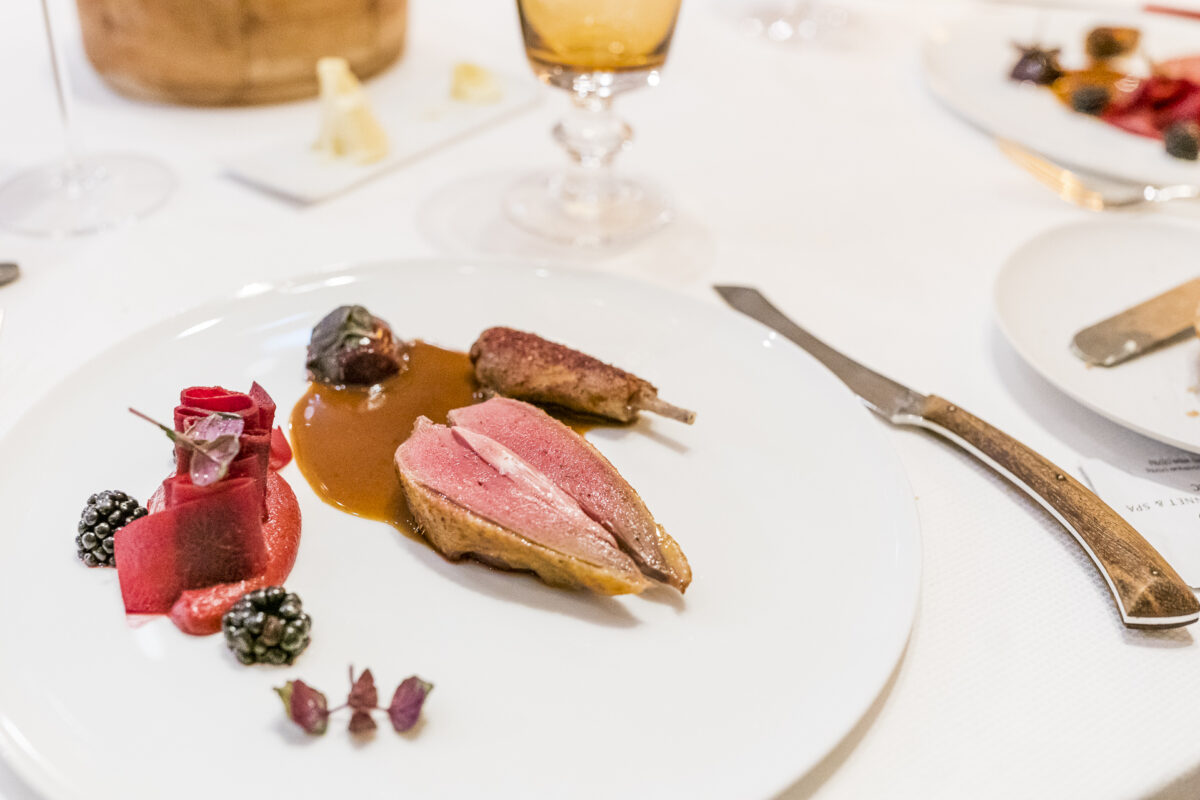
The hotel is located in the centre of Cognac, in one of the oldest cognac houses in France. This has been extensively renovated and supplemented with a modern extension and has been another highlight in the culinary up-and-coming Cognac since its opening in 2018.
Located a good 120 kilometres north of Bordeaux in the Charentais region in southwestern France, Cognac did not have the same international tourist appeal as the Saint-Emilion wine-growing region for a long time. At least I didn’t have cognac directly on my “travel radar”. But our two-day stay definitely made me want to come back here again in spring or autumn. Unfortunately, many promising-sounding restaurants and bars as well as museums (including the Musée des Arts du Cognac) were closed during the holidays – but Cognac undeniably has the potential to become an up-and-coming weekend destination.
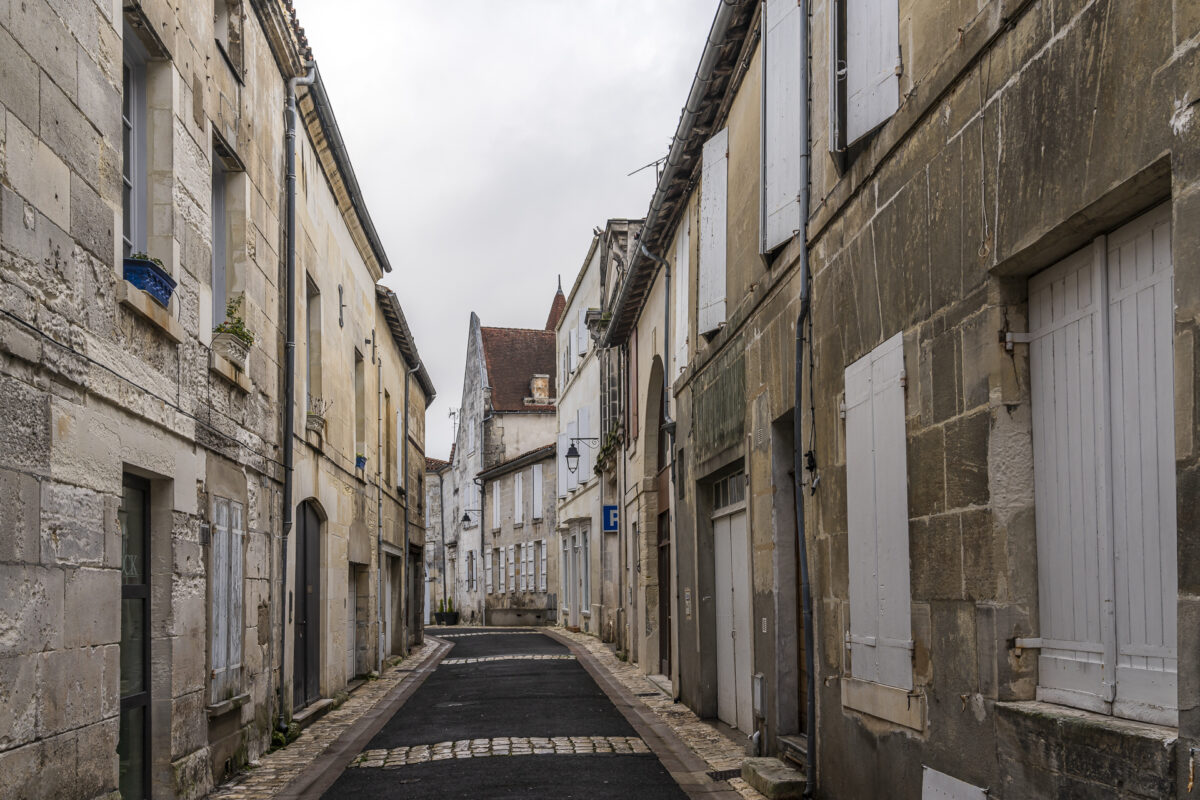
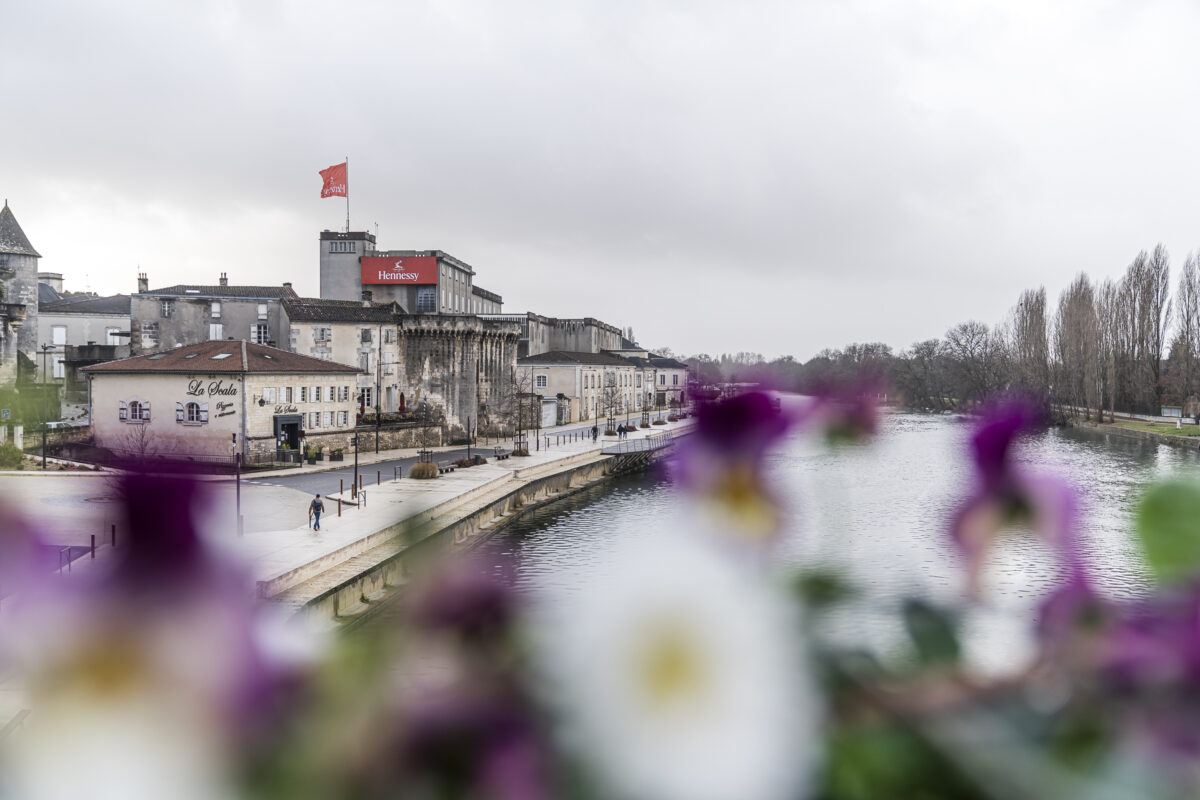
I also have to give the Hôtel Chais Monnet & Spa a wreath at this point. Not only was the menu at Les Foudres one of the top three gourmet meals of this trip, but the staff truly lived up to the standards of a Leading Hotel of the World. I had booked the hotel as a “normal” private person via Booking and was really stunned when the PR manager greeted me personally, was pleased about the Swiss visit and surprised us with a suite upgrade.
Stage 7 : Rainskoller in Limoges
Unfortunately, the gloomy weather followed us from Brittany via Cognac to Limoges in central France. And accordingly, our desire to explore had subsided a bit in the meantime. On the way from the bay of Mont-Saint-Michel to Cognac, we made a short stop in Nantes and marched with the umbrella to the Château des ducs de Bretagne. From Cognac to Limoges we stopped in Jarnac, the birthplace of François Mitterrand. On the other hand, we took a look at another “Plus beaux villages de France” with Mortemart.
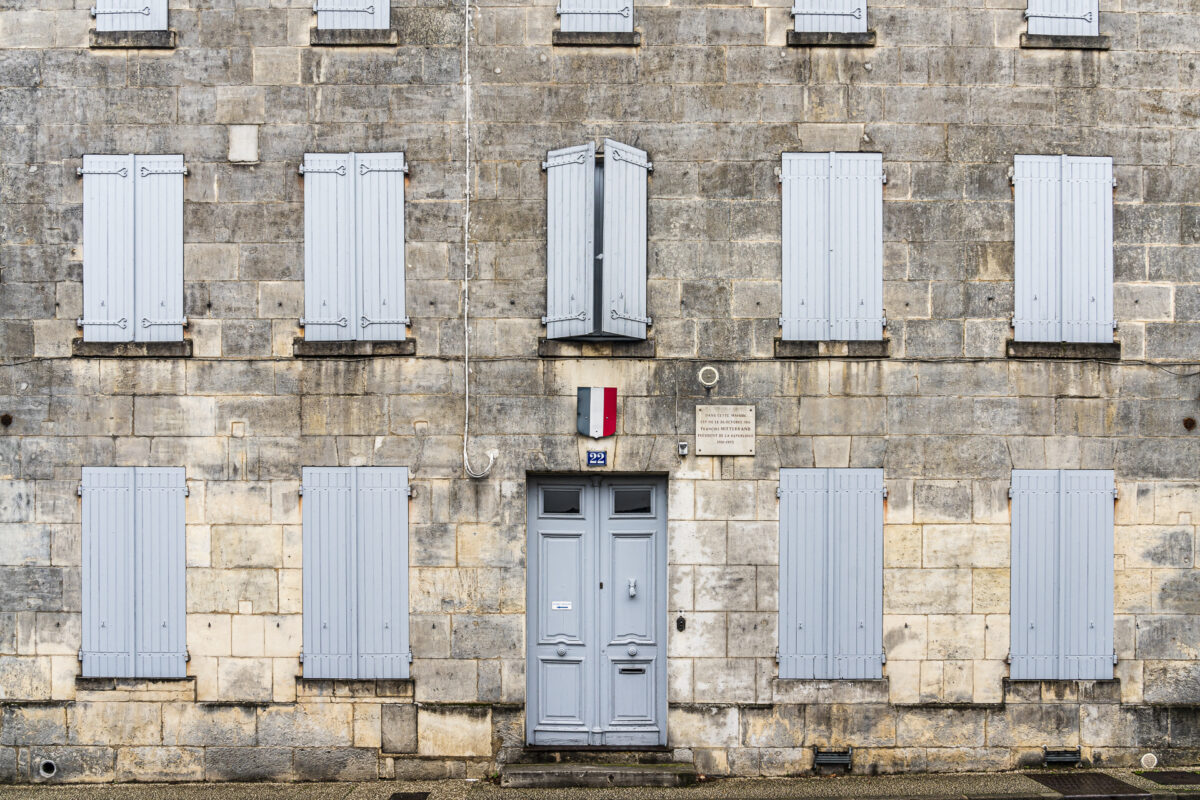
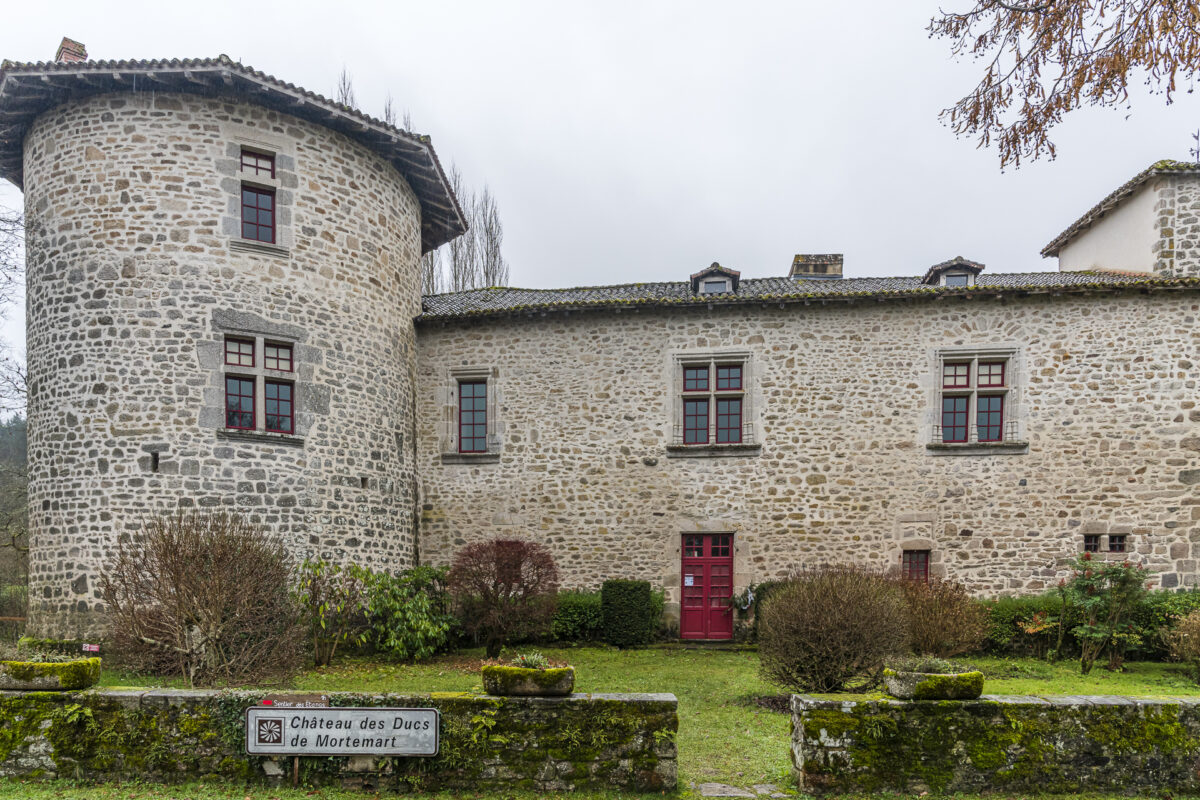
And even though we had actually planned to immerse ourselves in the diverse history of Limoges – we spent a full day in the cozy armchairs of the Chapelle Saint-Martin (partner link) instead. This is also a recommended accommodation for those who like fine dining, love French cheese and prefer a quiet place to stay.
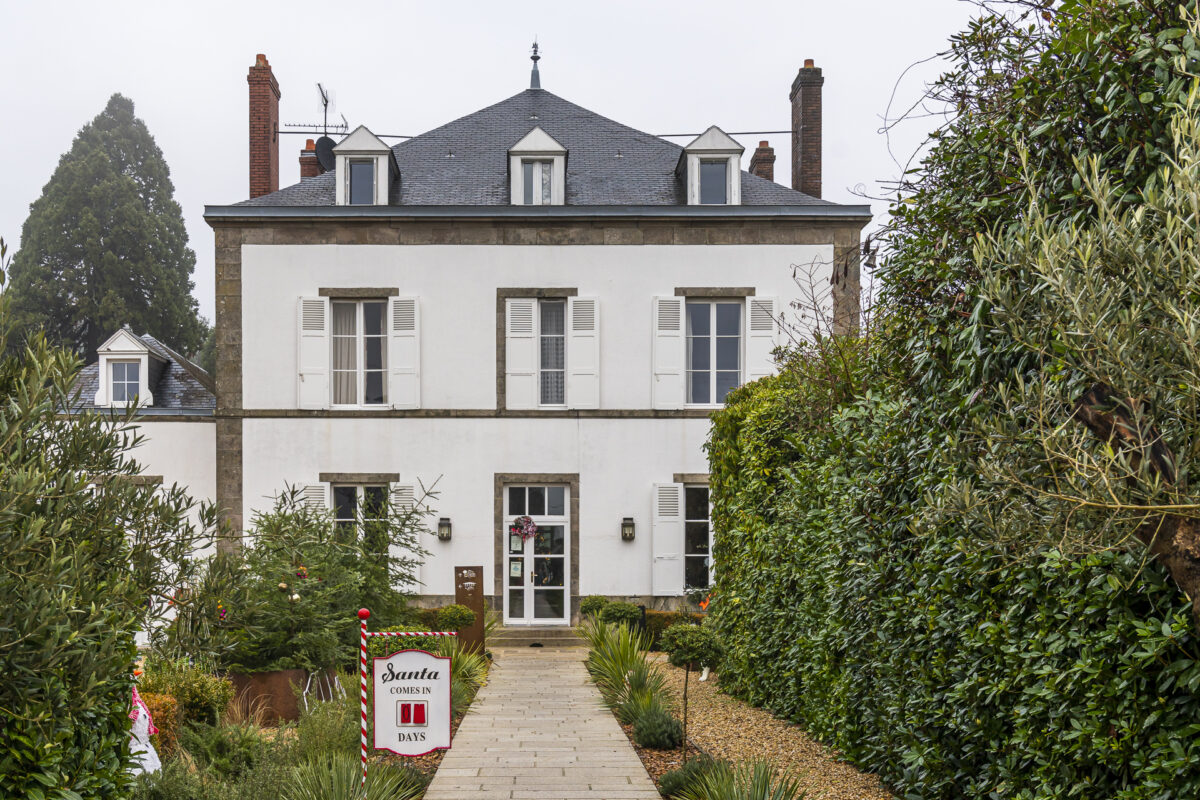
Stage 8 : The impressive volcanic landscape of Auvergne
Yes, admittedly – despite cozy hours in front of blazing fireplaces and with excellent food, my mood was in the basement after almost five days of continuous rainy weather. It was high time for the sun to return for the last legs of our France road trip.
The journey took us from the rural and sparsely populated region of Limousin to the Hôtel & Restaurant Le Pré (partner link) near Clermont-Ferrand. The two-Michelin-starred restaurant is located not far from a great viewpoint just above the centre of Clermont-Ferrand. The perfect spot to finally soak up the sun again.
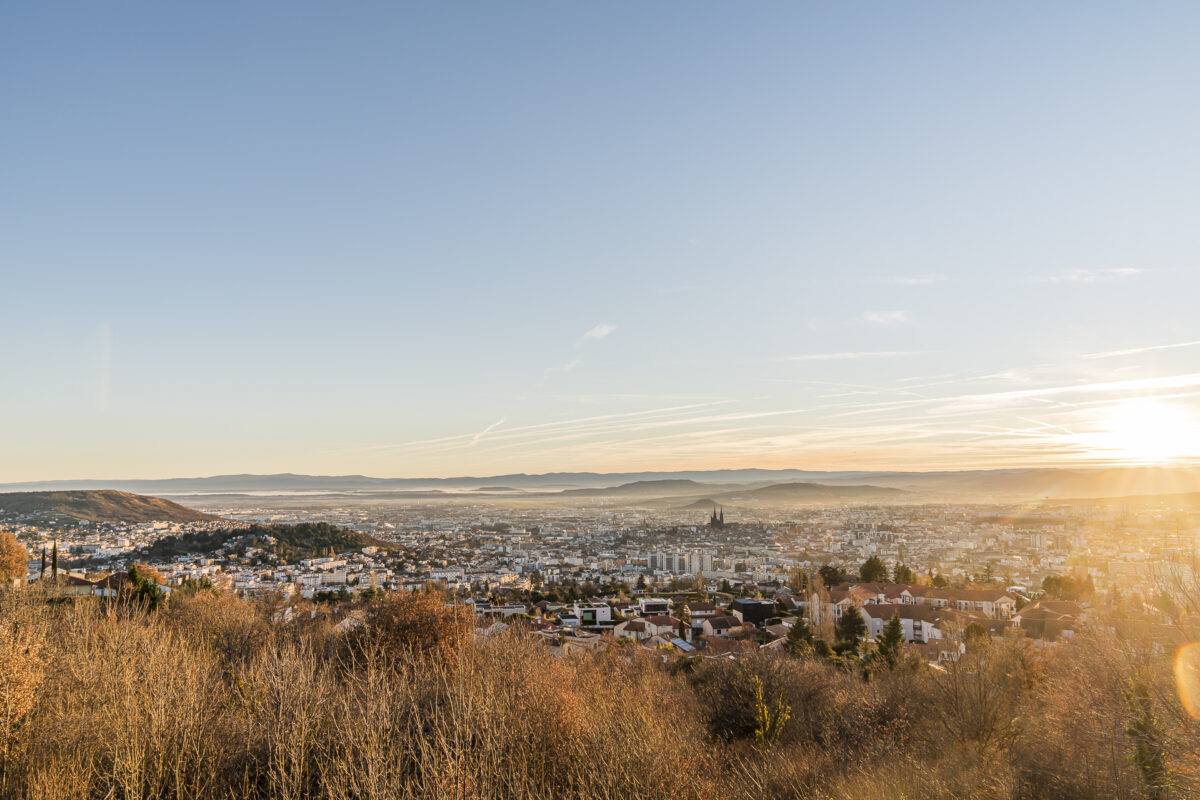
Le Pré impressed us with really nicely designed rooms. The menu, on the other hand, could not completely convince us. Admittedly, we also had very high expectations. What bothered us in comparison to the other restaurants were the large portions. I think it’s a shame when a menu is put together in such a way that even people with a big appetite have to “fight” their way through the dish from the main course at the latest. The same goes for breakfast – this is really delicious – a dream for all those who like to have a hearty breakfast and appreciate homemade specialties. Unfortunately, it was also far too much for us.
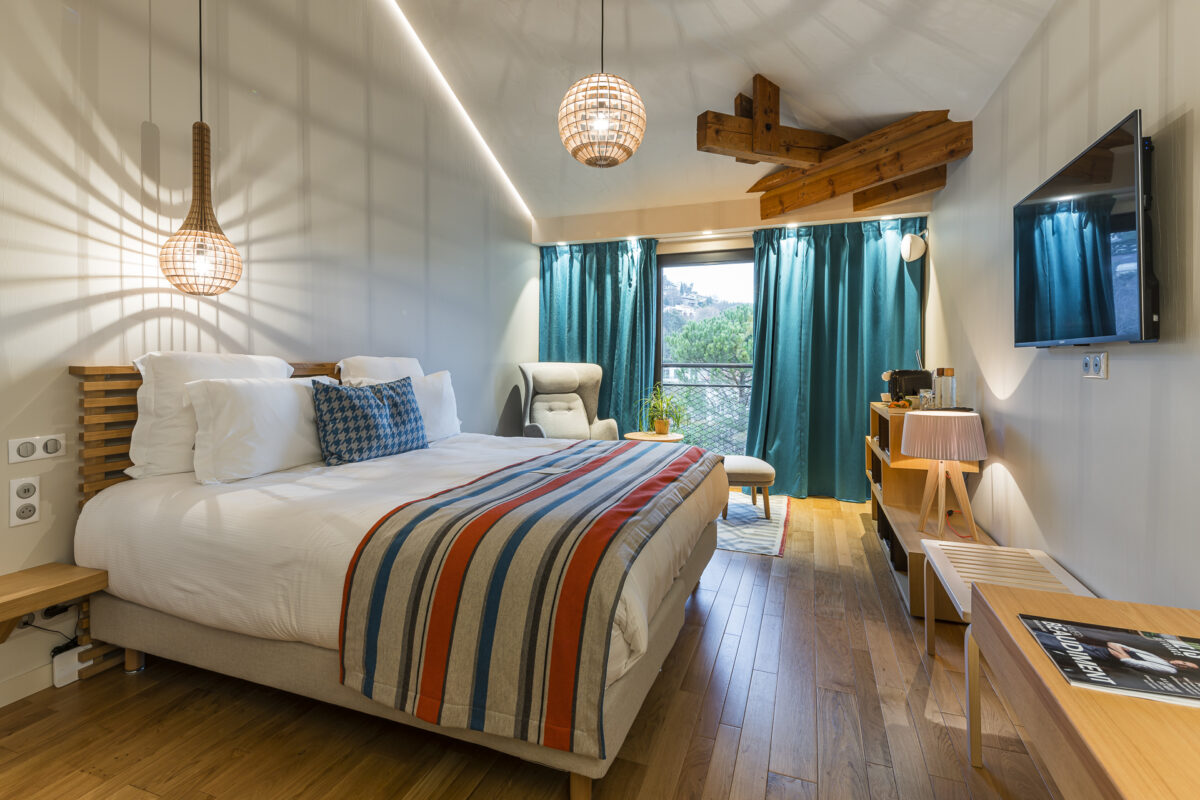
After all, in this beautiful weather, our desire for long walks was awakened again. How fortunate that the highest mountain of the impressive Chaîne des Puys – the Puys de Dôme – is only a 20-minute drive from Le Pré. The ascent to the 1,465-metre-high volcano can be done either on foot or with the panorama railway. The train runs at least 1x hourly in the low season (winter months) between 10:00 am and 5:00 pm and tickets cost between 12.50 and 14.50 euros (one way). Definitely a worthwhile and, above all, promising excursion destination not far from Clermont-Ferrand!
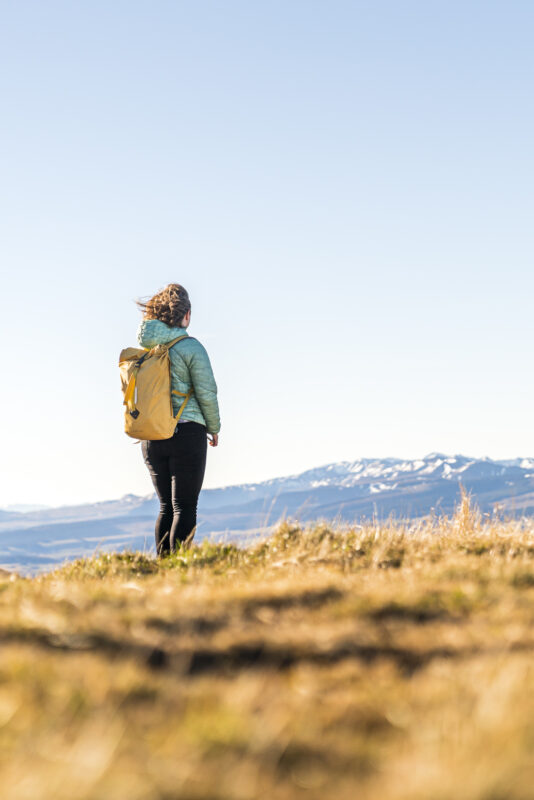
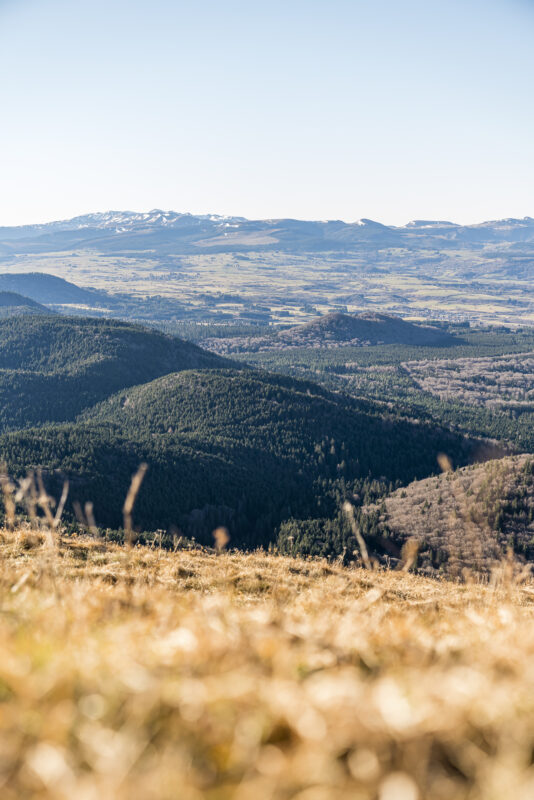
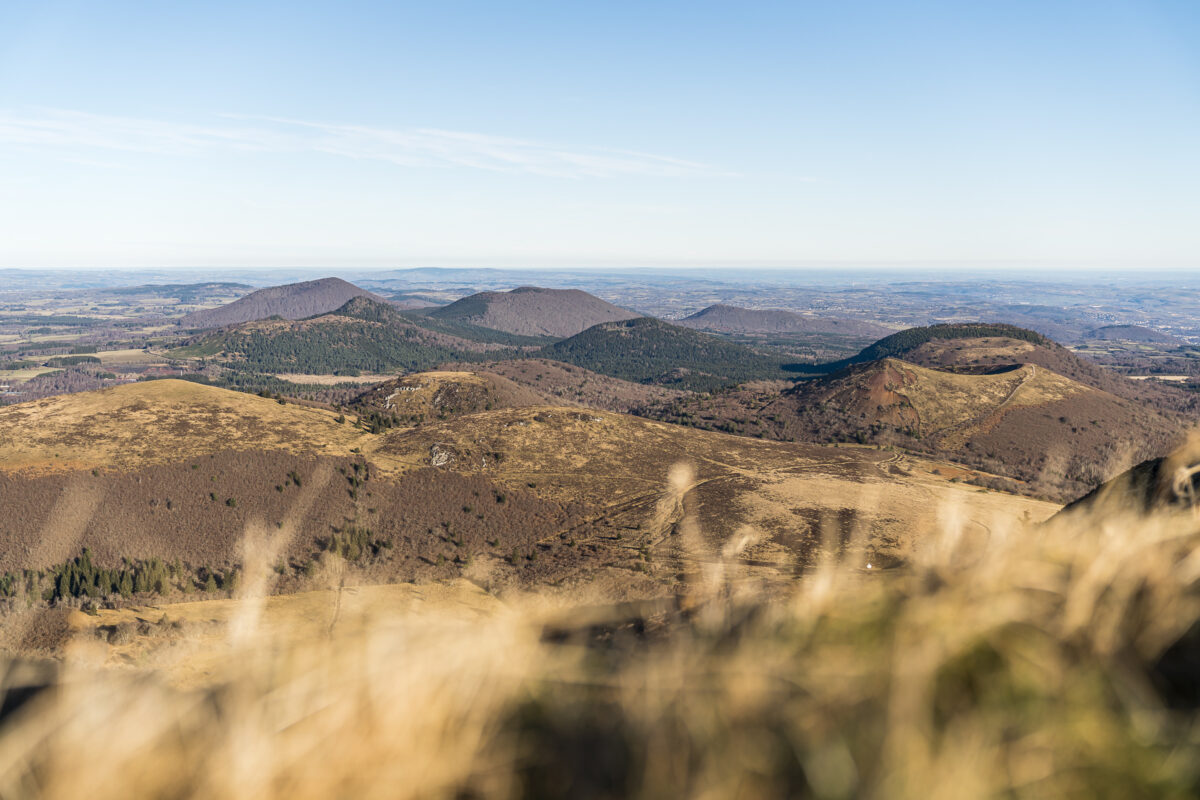
Stage 9 : A hideaway in the Loire Valley
Our last stopover before returning to Paris was a “coincidence”. Originally, we wanted to spend two nights in Auvergne, but le Pré only had rooms available for one night. So I started looking for another place to stay somewhere in the middle of the route between Clermont-Ferrand and Paris and realized: Ah – there’s still the Loire Valley! And so it happened that we checked in for one night in the hunting lodge “les Hauts de Loire” (partner link), built in 1860. A jewel located directly on the wine route as an ideal base for exploring the Loire Valley between Orléans, Blois and Tours.
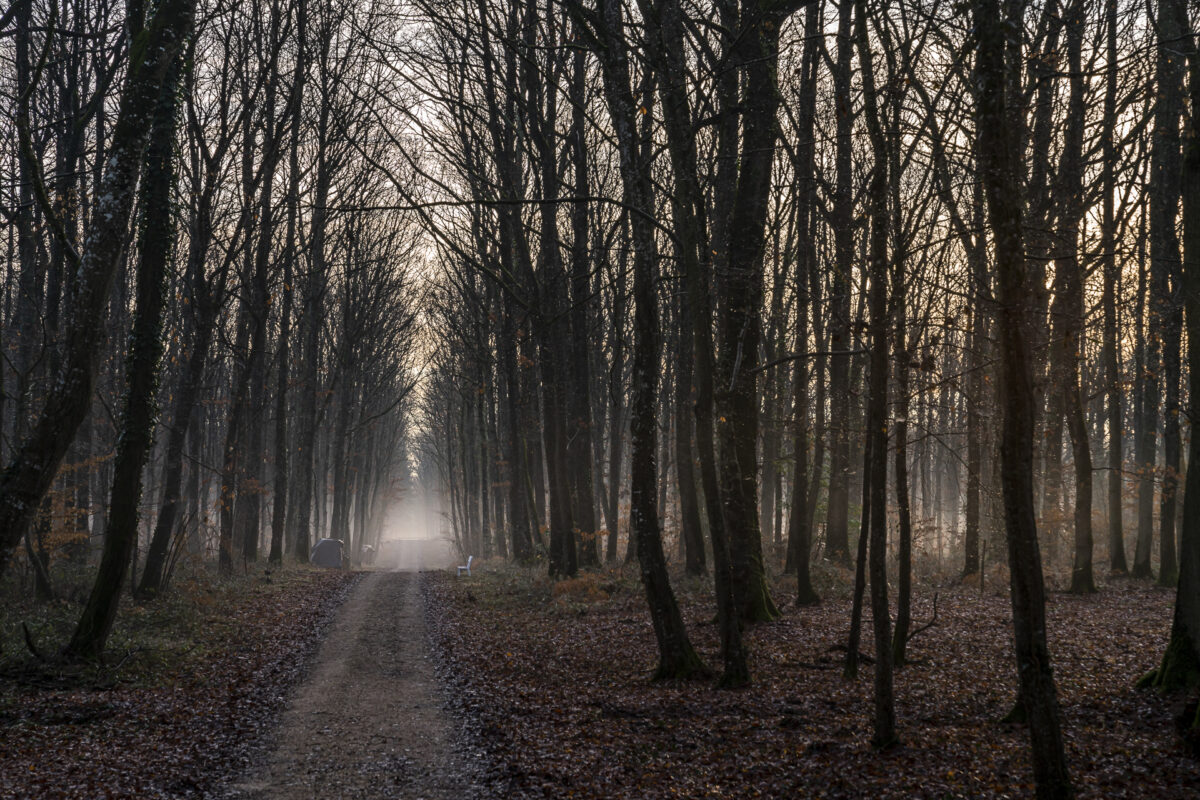
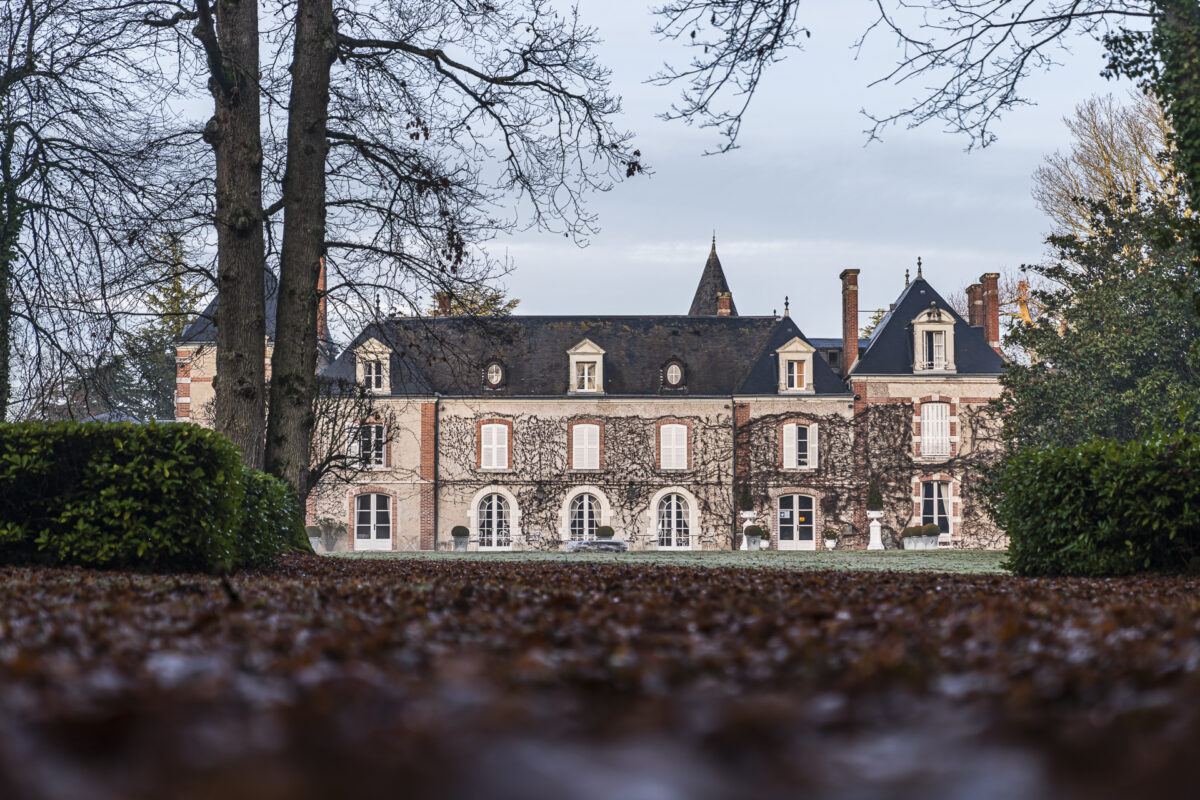
The hotel is located in a spacious park and has two restaurants. One of them has been awarded two Michelin stars. To be honest, I could have easily stayed here one or two days longer and would have liked to explore more of the region. We only had enough time for a short stroll through the pretty old town center of Blois with the impressive Château Royal and the Jacques Gabriel bridge, the last Loire bridge built with a donkey arch.
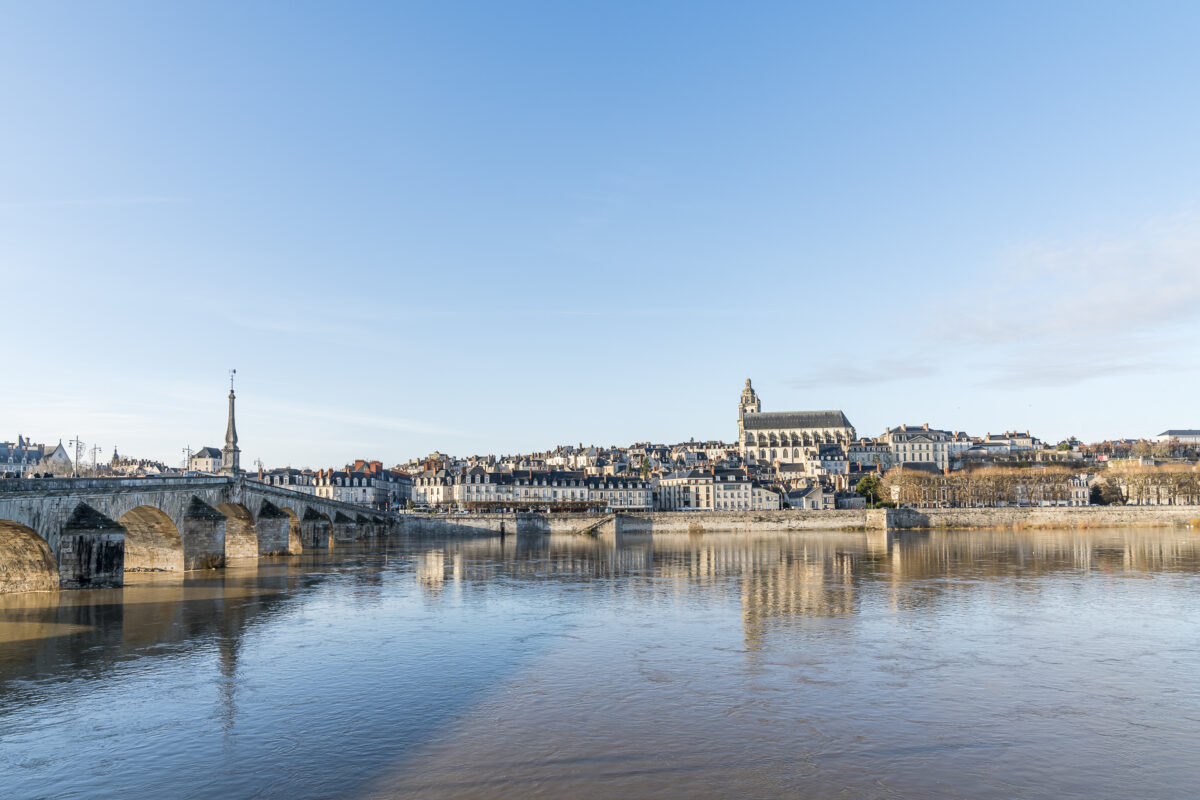
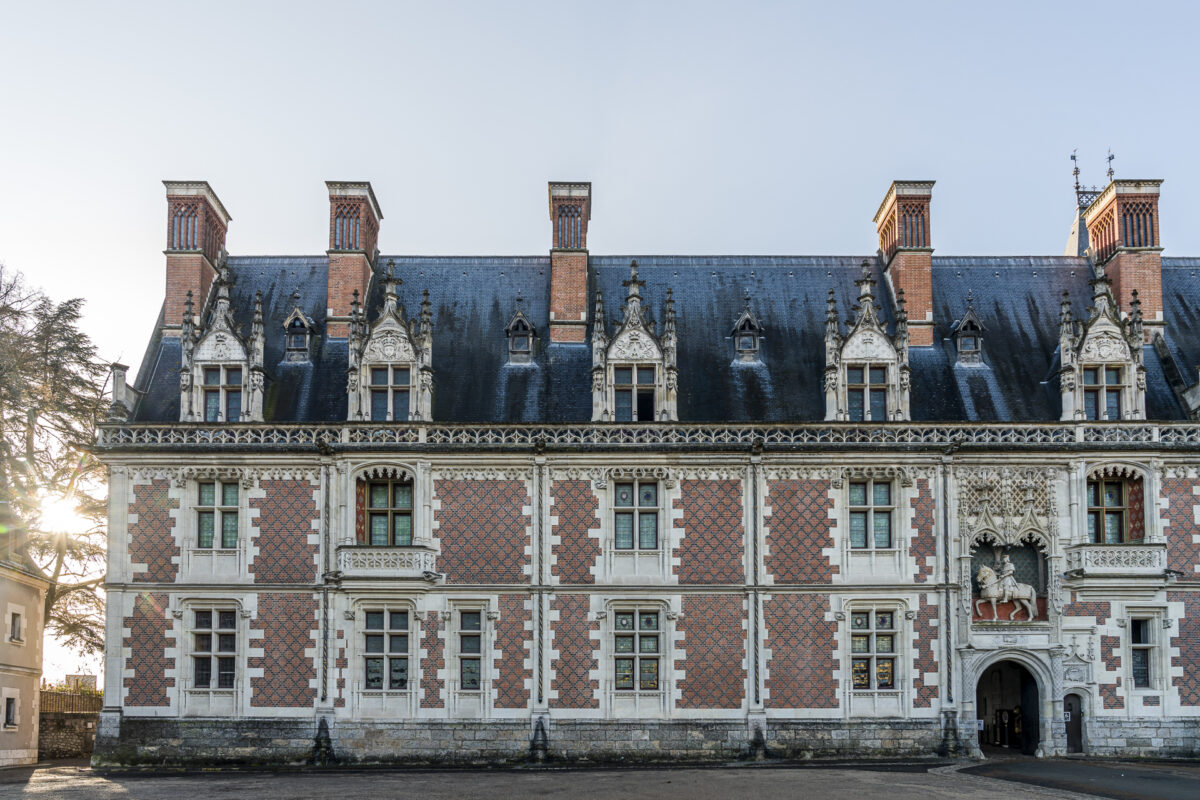
Stage 10: and return to Paris
The last day of the road trip also has another highlight in store. From the Domaine les Hauts de Loire we follow the idyllic banks of the Loire back to Blois.
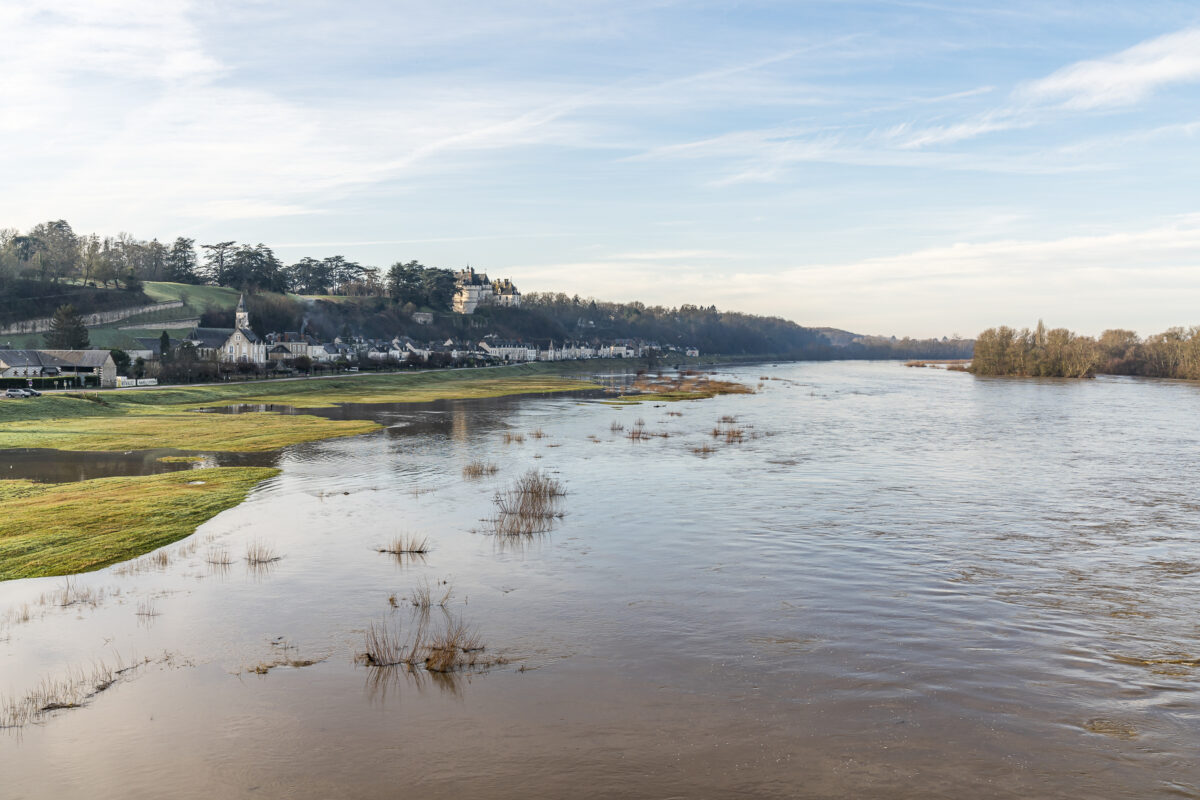
The A10 from Blois to Paris passes halfway along the outskirts of Orléans. Since we have enough time left until the car is returned, we make a last stop in the capital of the Centre-Val de Loire region. What a good decision! What kind of visual impact does this symmetrical city axis of the Rue Jeanne d’Arc with the adjoining Sainte-Croix cathedral unfold?! The alleys of the old town, which stretch south from the cathedral to the banks of the Loire, are also really pretty. Well – another place I would like to return to one day.
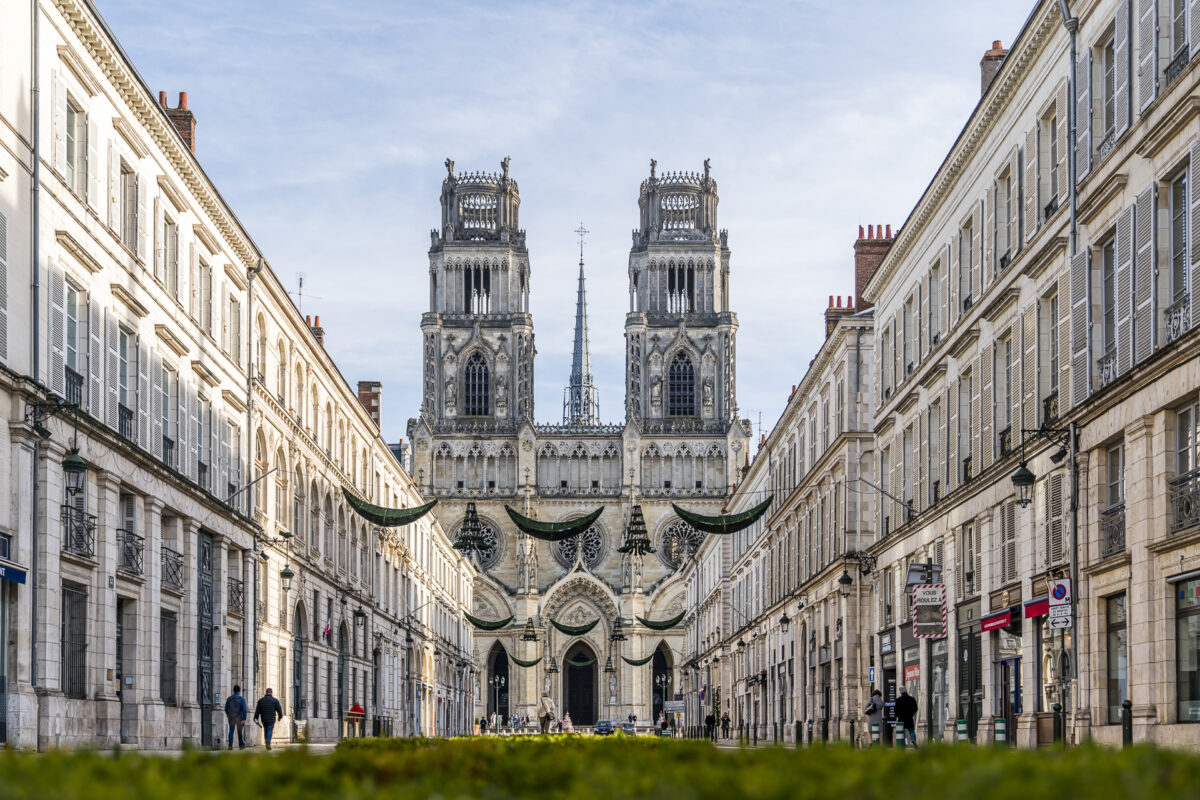
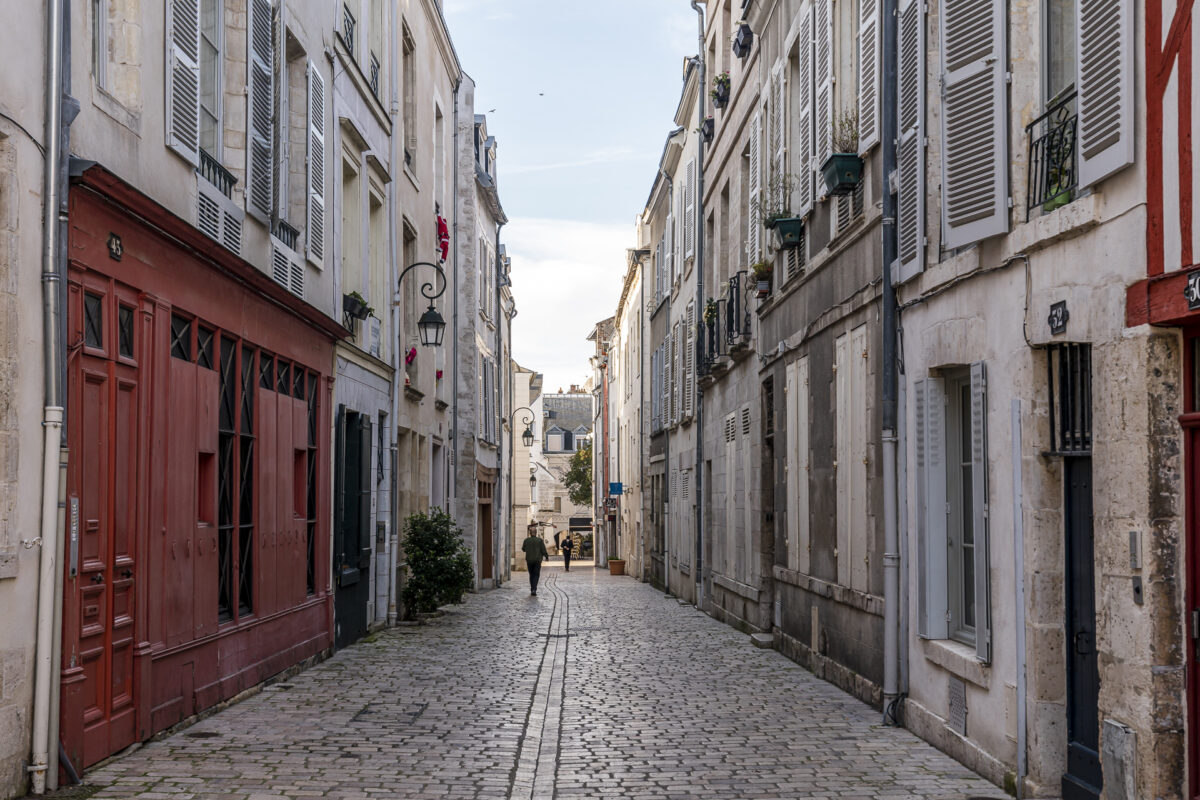
This 14-day road trip has shown us once again how diverse and multifaceted France is. And at the same time – thanks to the bad weather – we spent some cozy hours in wonderful accommodations and feasted on creative French cuisine. Holidays, just the way we like it.
Practical tips for your road trip through France
If you, like us, go on a road trip through France in winter and rent the car in France, you should note that snow chains are not part of the standard equipment, but must be booked. On our route, for example, we were also on the road in Auvergne at altitudes up to a good 1,000 meters above sea level. In these locations, snow-covered roads are quite possible in winter.
On French motorways, the speed limit is 130 km/h. In built-up areas, as in Germany, the speed limit is generally 50 km/h, although many local roads are signalled at 30 km/h. Unless otherwise indicated, the speed limit outside built-up areas is 80 km/h.
In addition to the cost of renting a car and refueling, the toll must also be calculated. This depends on the distance and the distance travelled. France does not have a vignette – the toll is paid directly at the corners of the motorway (the easiest way is with a credit or debit card).
Most of the attractions we visit can be visited free of charge – depending on the location and season, there is only a fee for parking.
We stayed in rather higher priced accommodations and were out and about over the holidays. Accordingly, our accommodation costs were the largest budget items. We paid between 300 and 500 euros here, depending on the accommodation. And yes – of course there are also cheaper alternatives.
In any case, what is cheaper compared to Switzerland is the cost of a dinner in a gourmet restaurant. We paid between 80 (Restaurant Donjon in Étretat, 1 star) and 180 (Restaurant Le Pré, 2 stars) euros per person. For those who don’t want to spend so much money, I can recommend the lunch menus in the restaurants that have been awarded a Bib-Gourmand (including the Fleur de Sel or L’Angle Saint Laurent in Bayeux) as an alternative. These cost around 30 to 35 euros (3 courses plus amuse-bouche and bread).
We had a small amount of cash with us – but 99% of the time we paid by card on the way. So you don’t necessarily have to take cash with you on a large scale.
Clearly the sunset in Étretat, the stay on the bay of Mont Saint-Michel at Château Richeux and the view over the Chaîne des Puys from the Puys de Dôme.


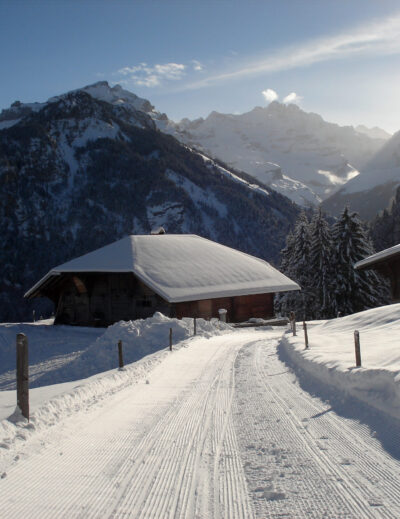
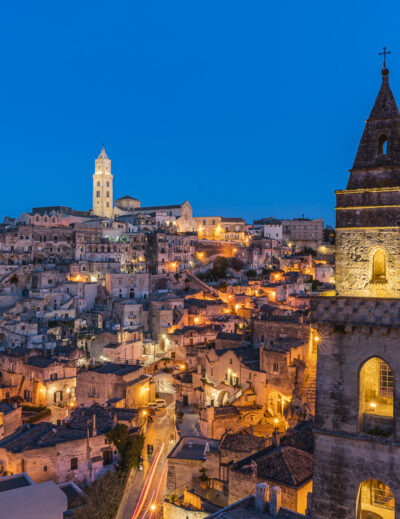
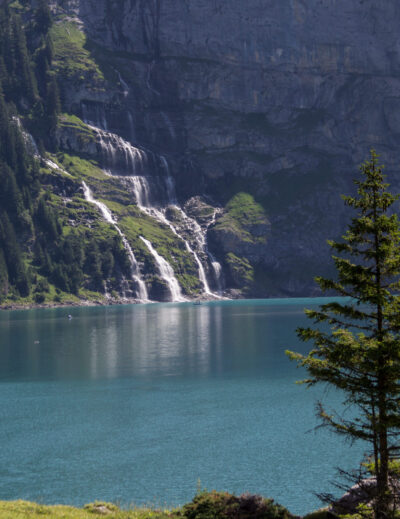
Leave a Reply